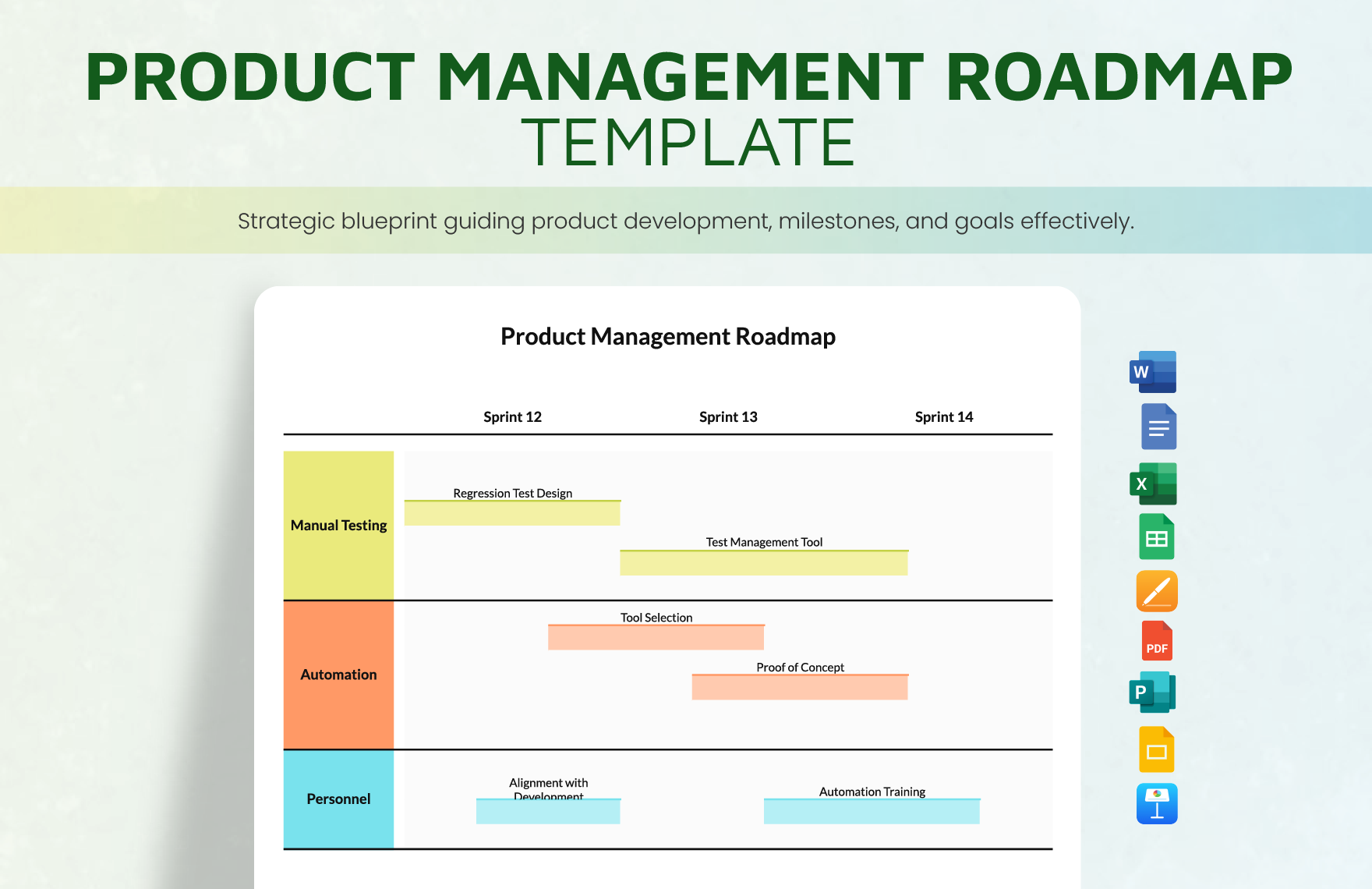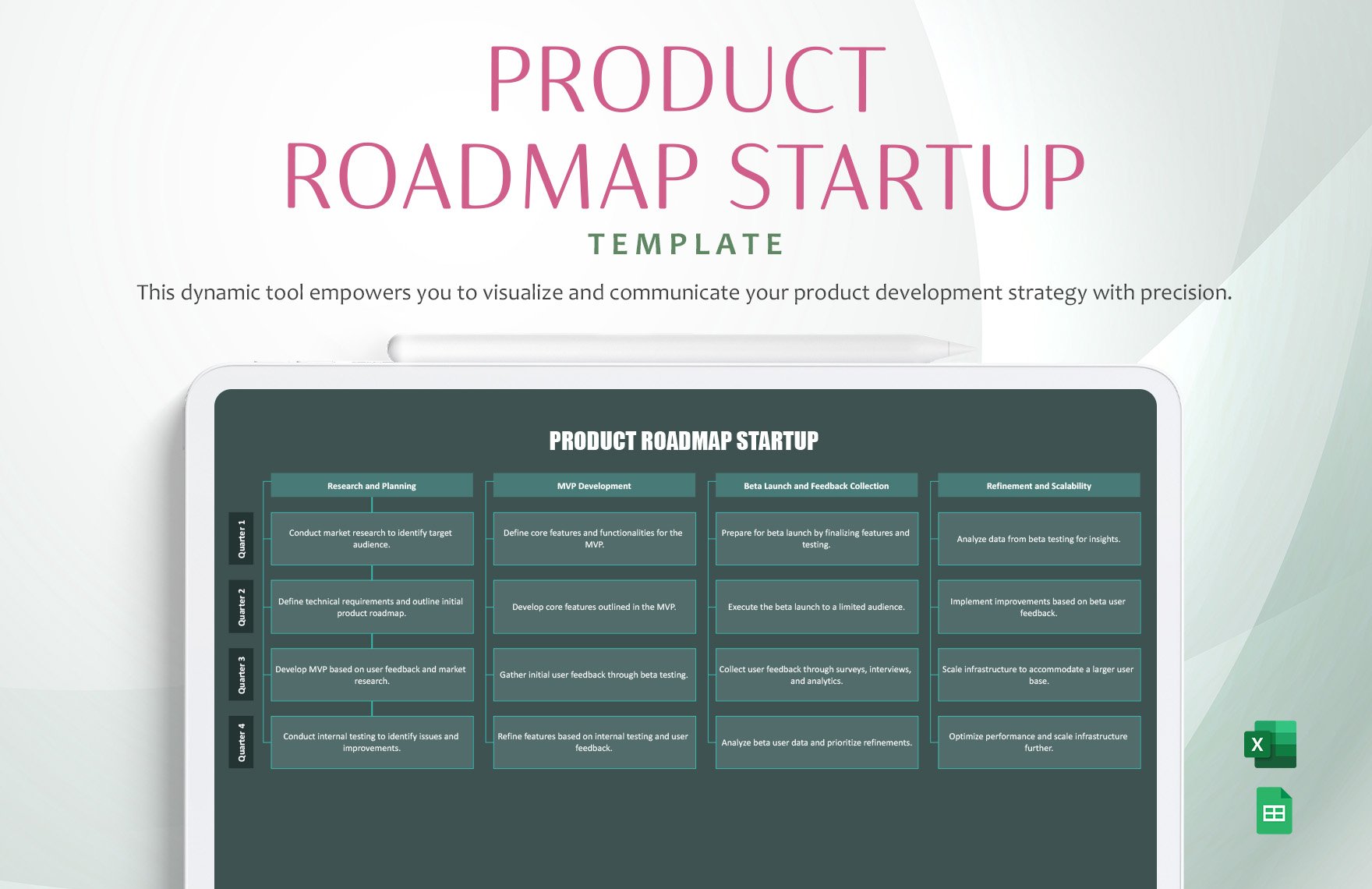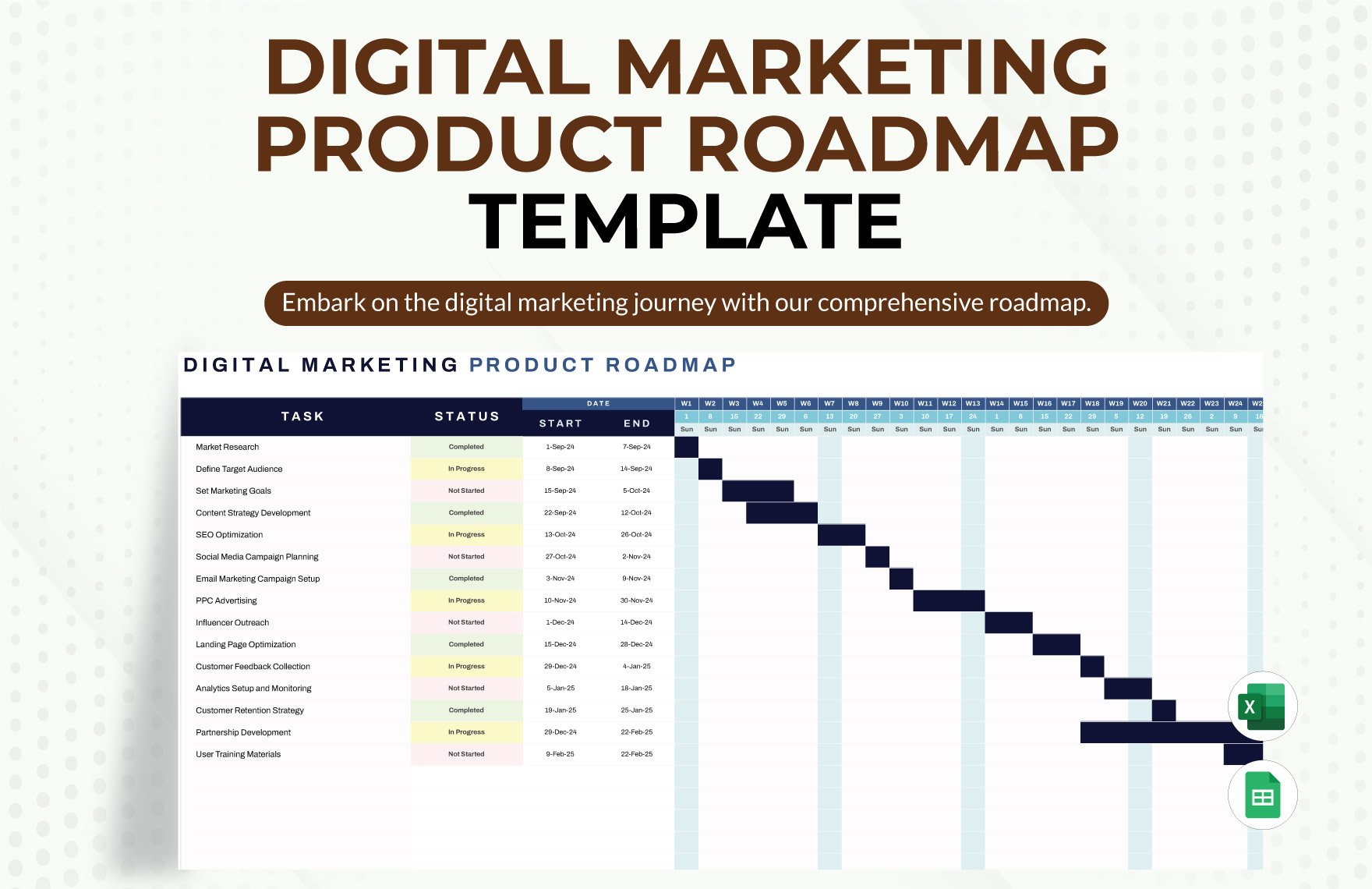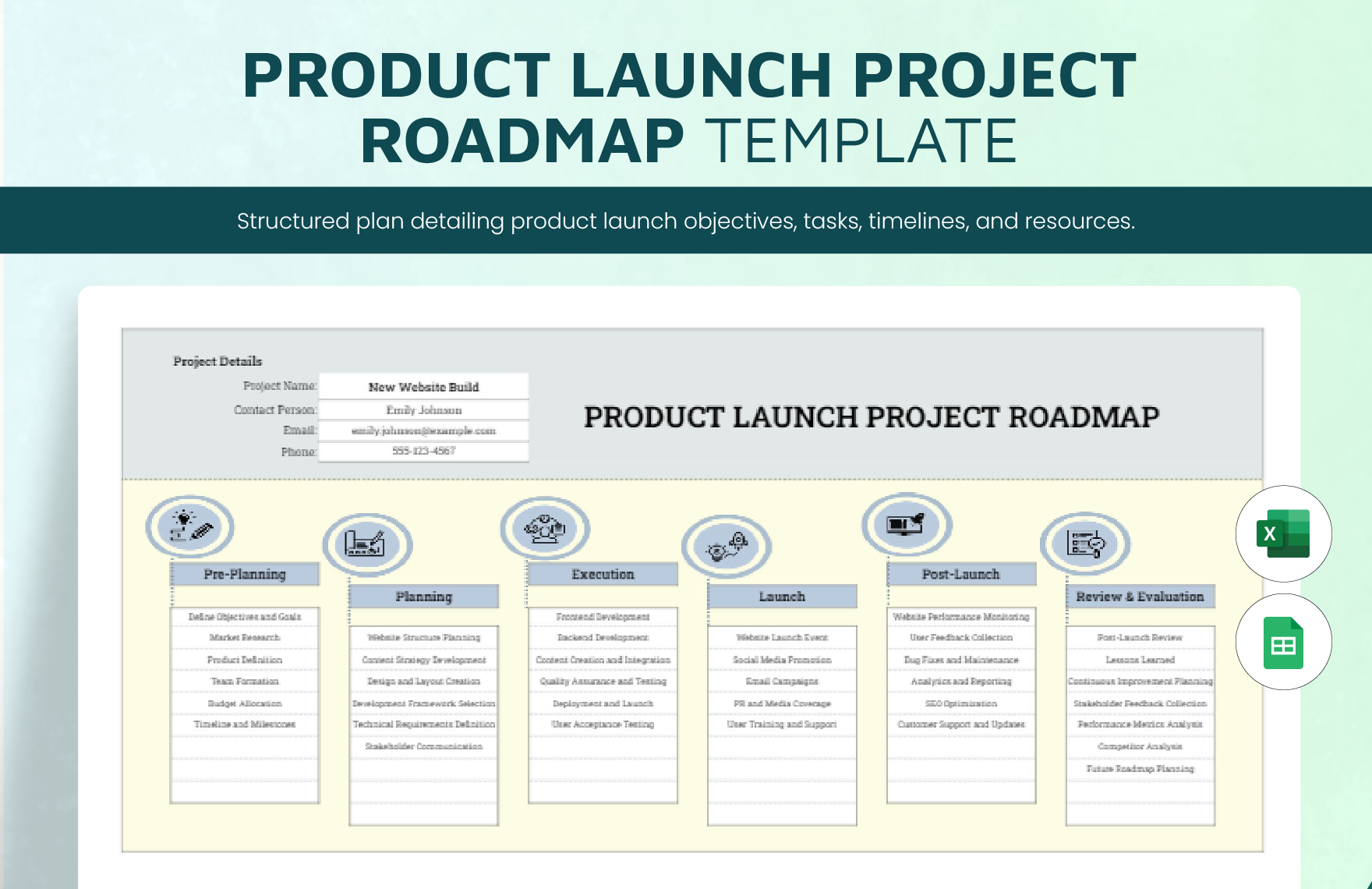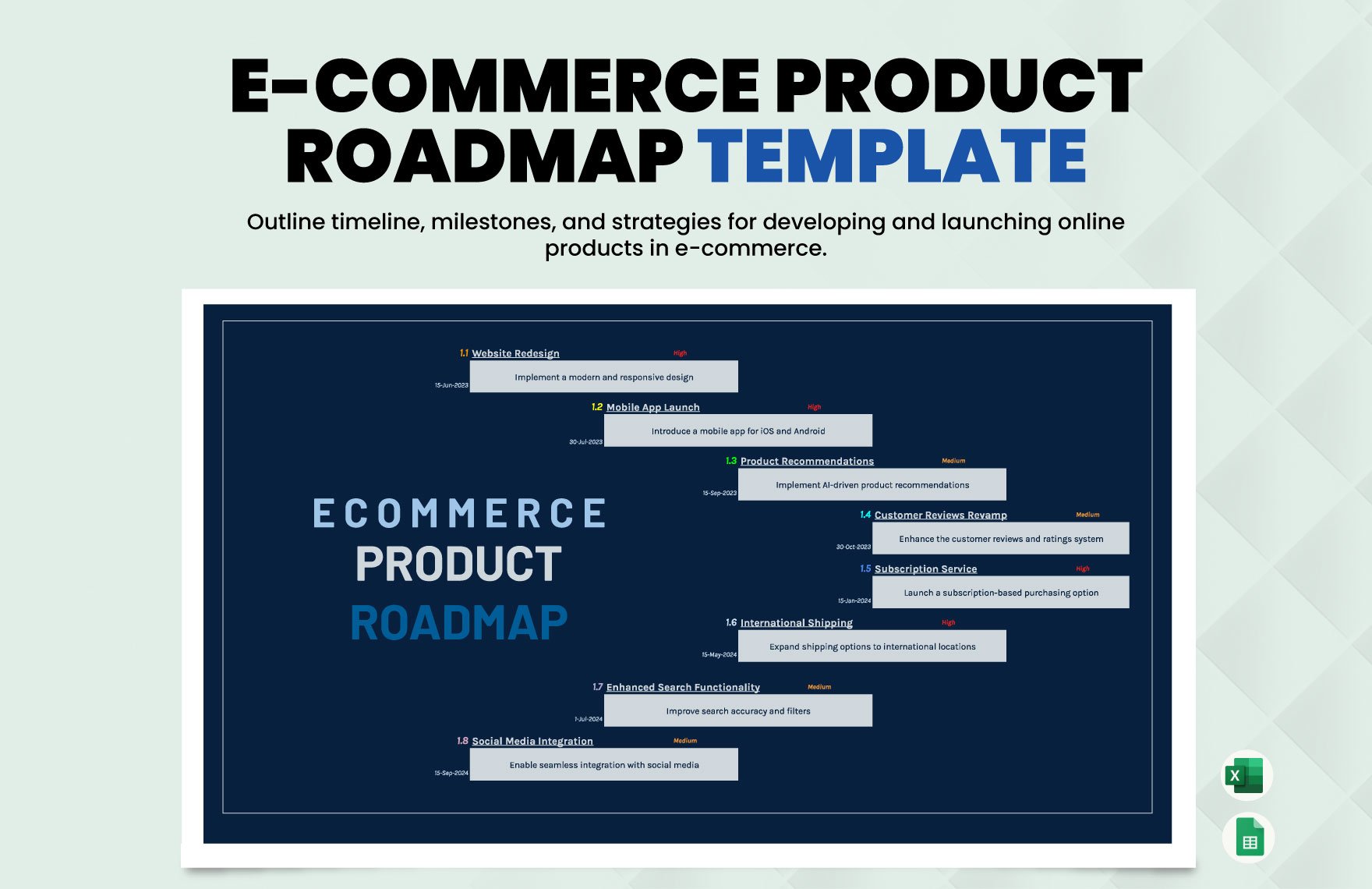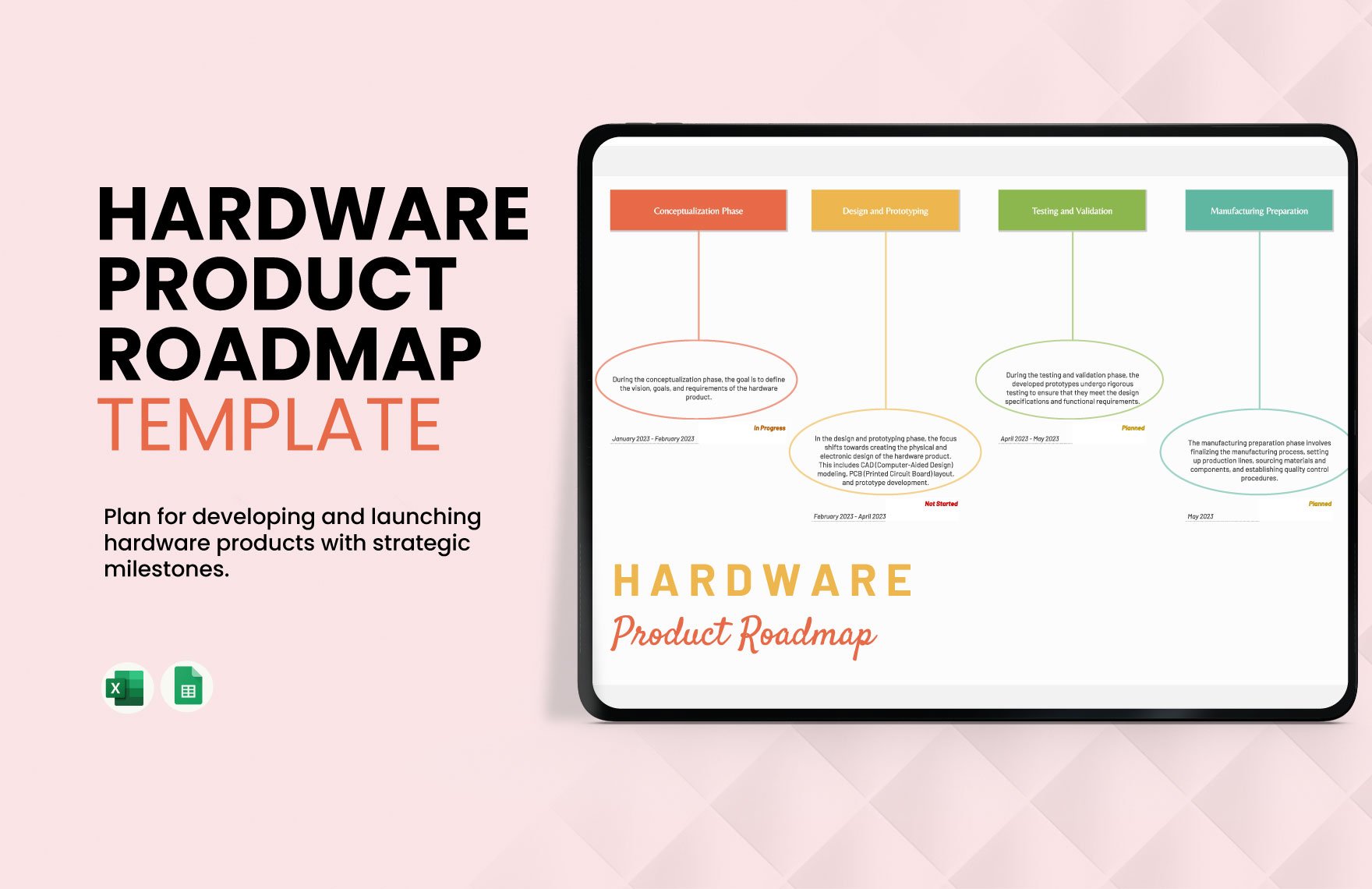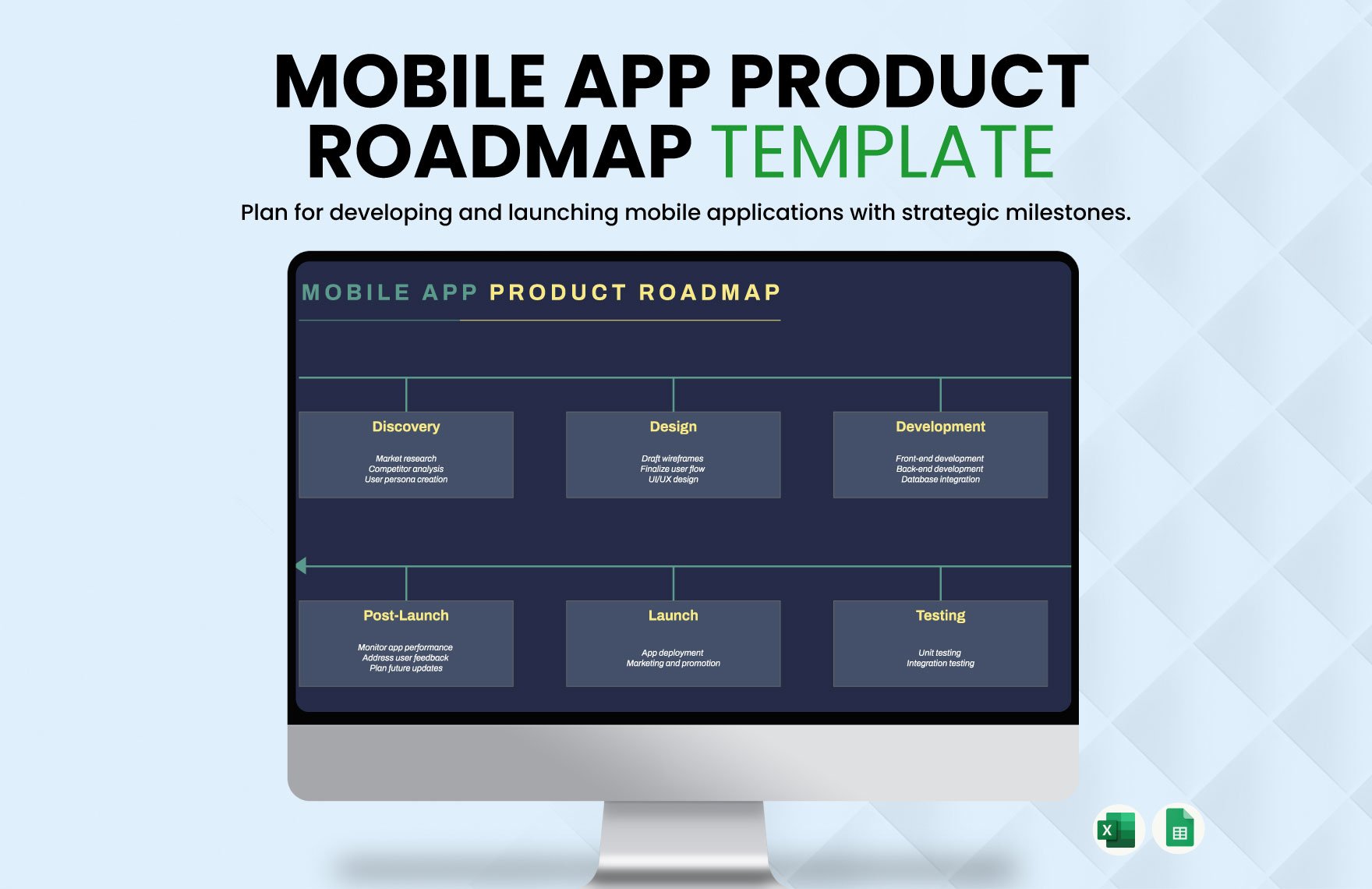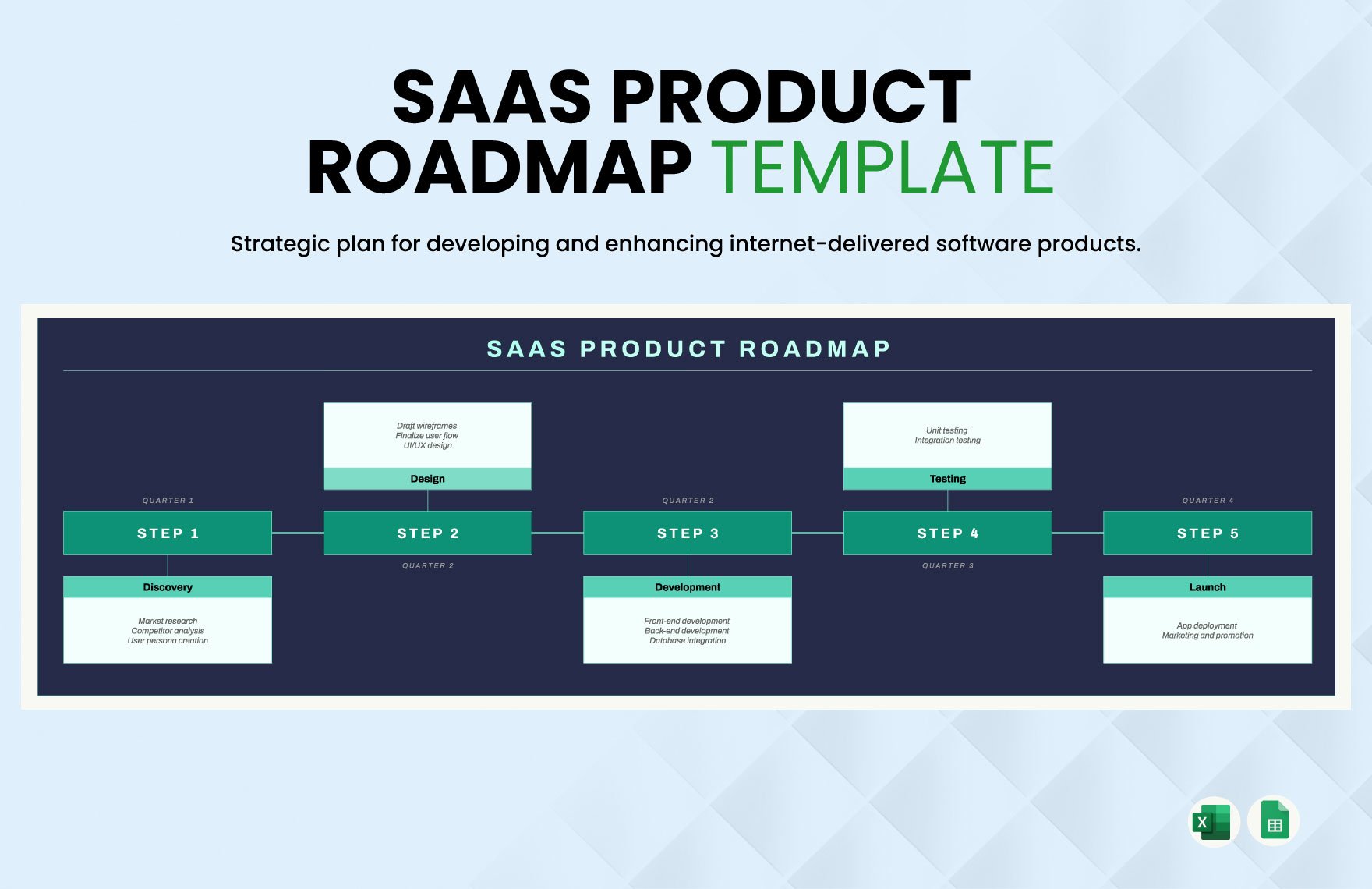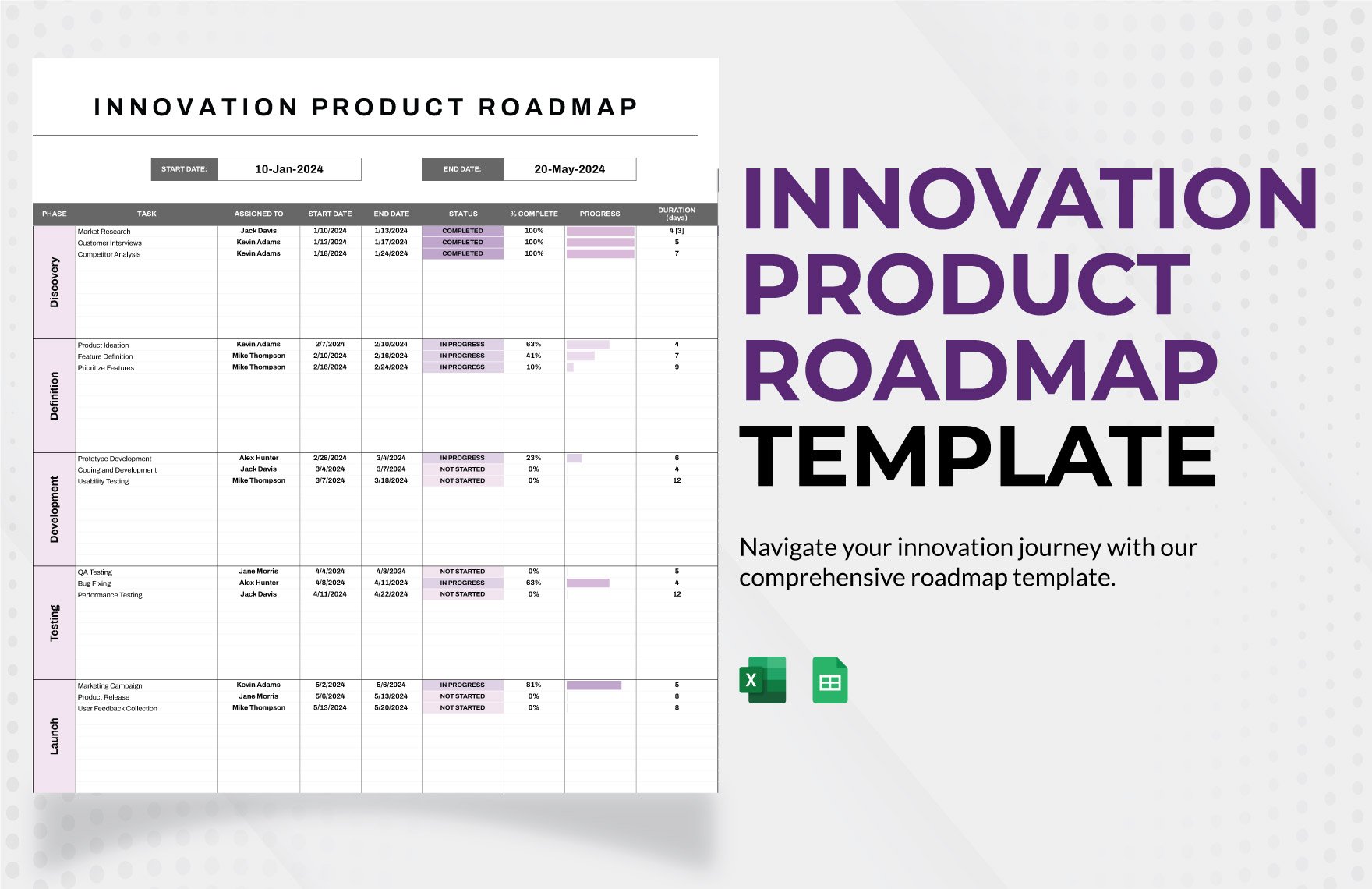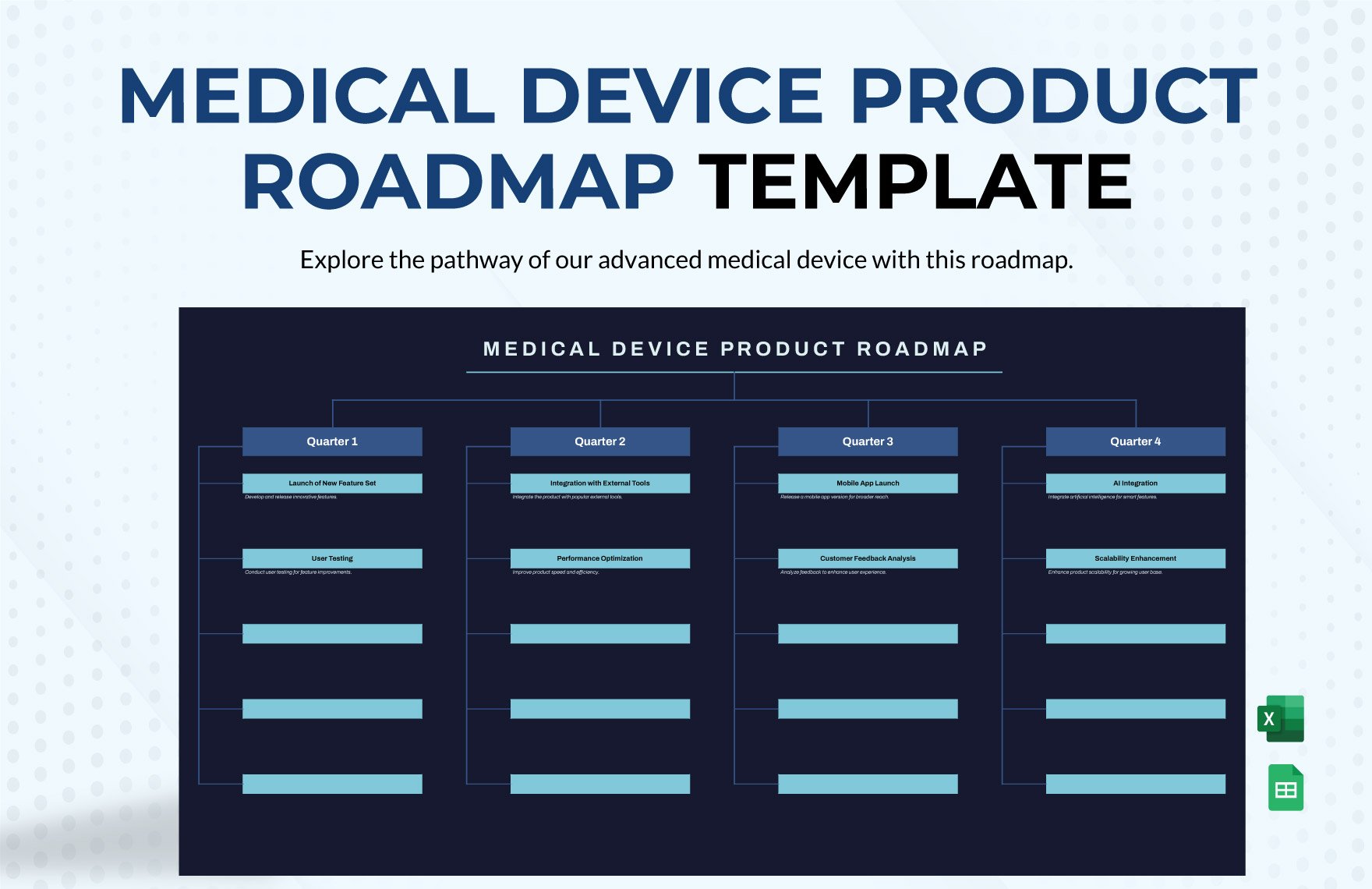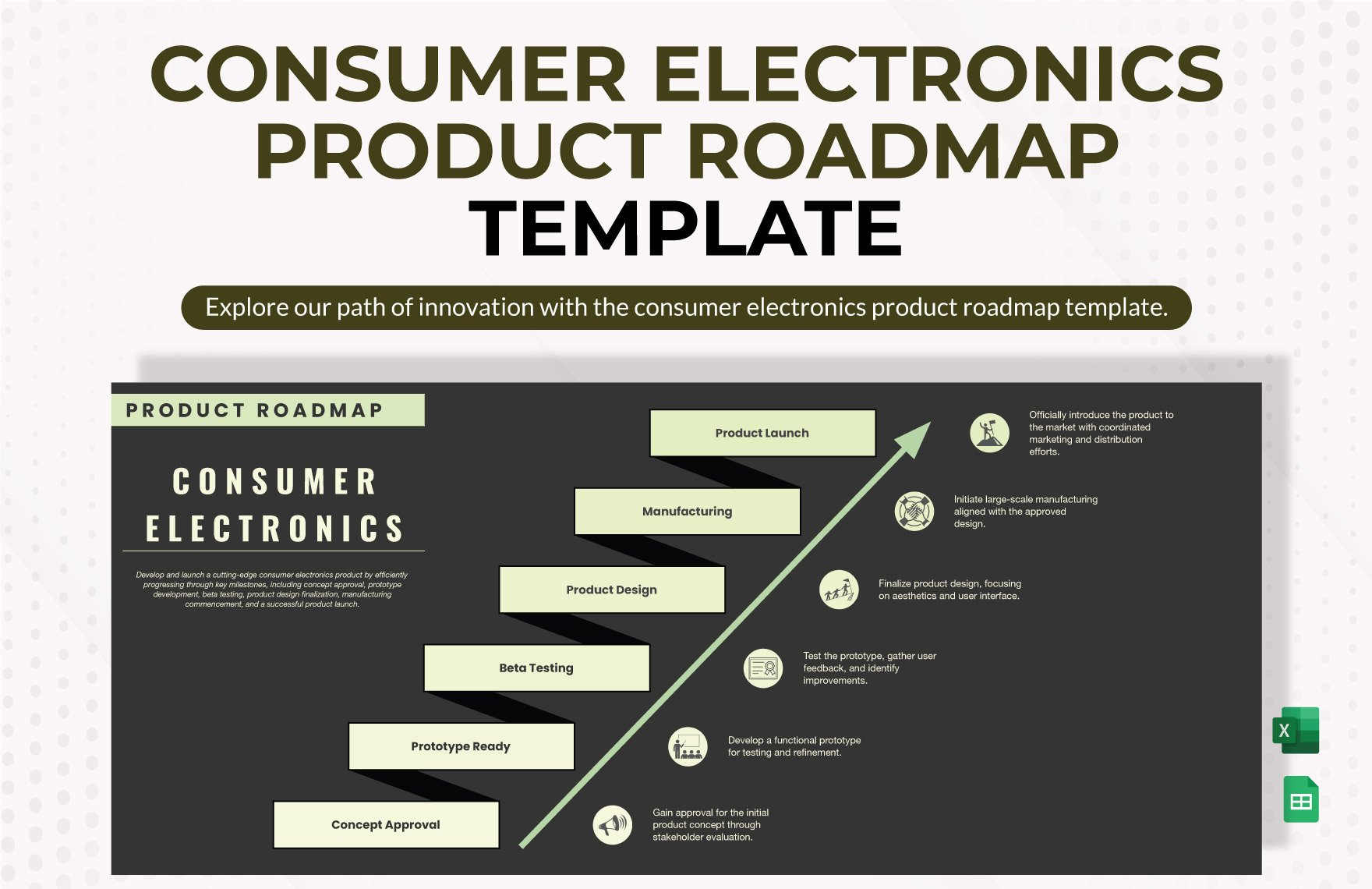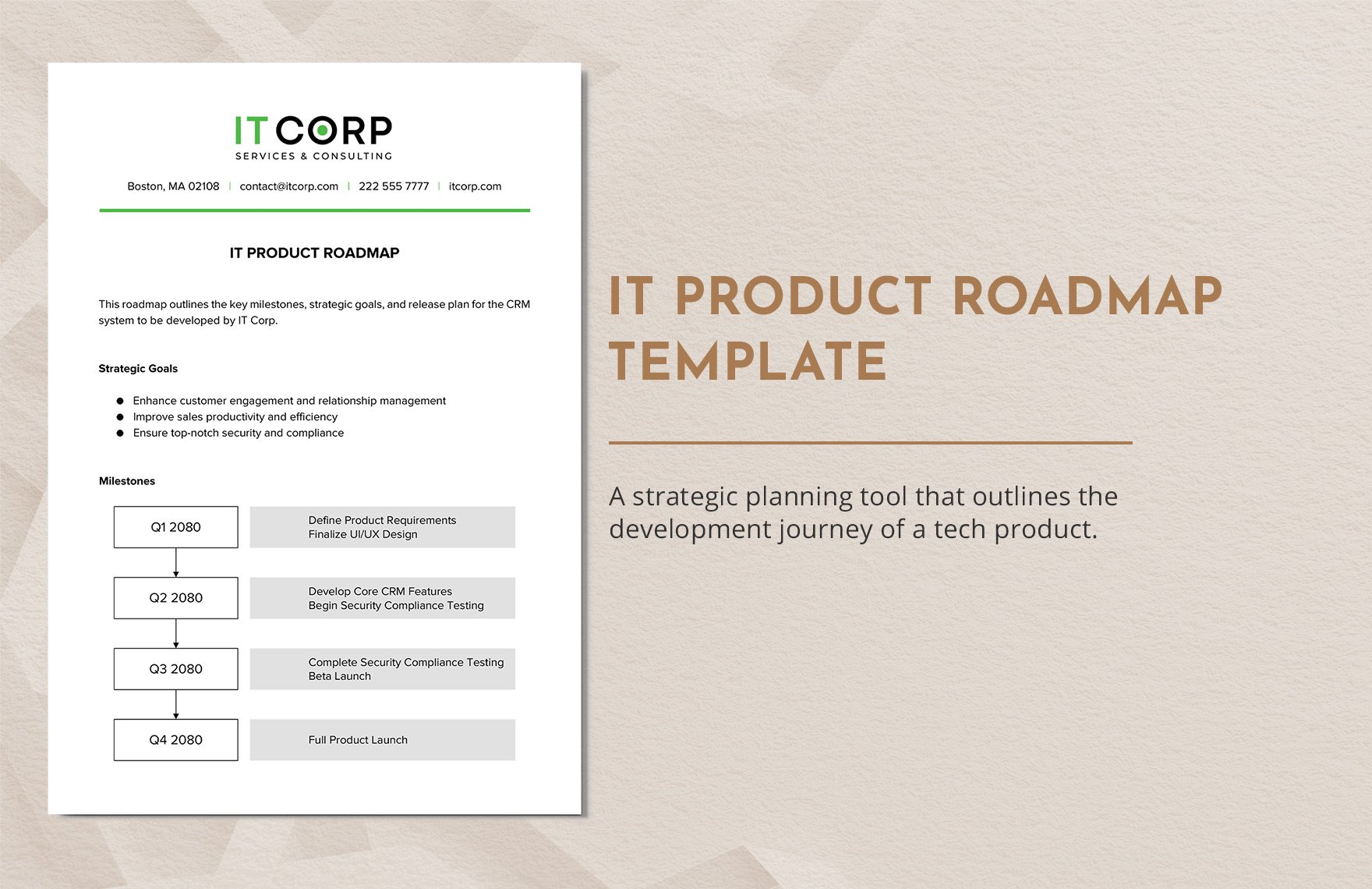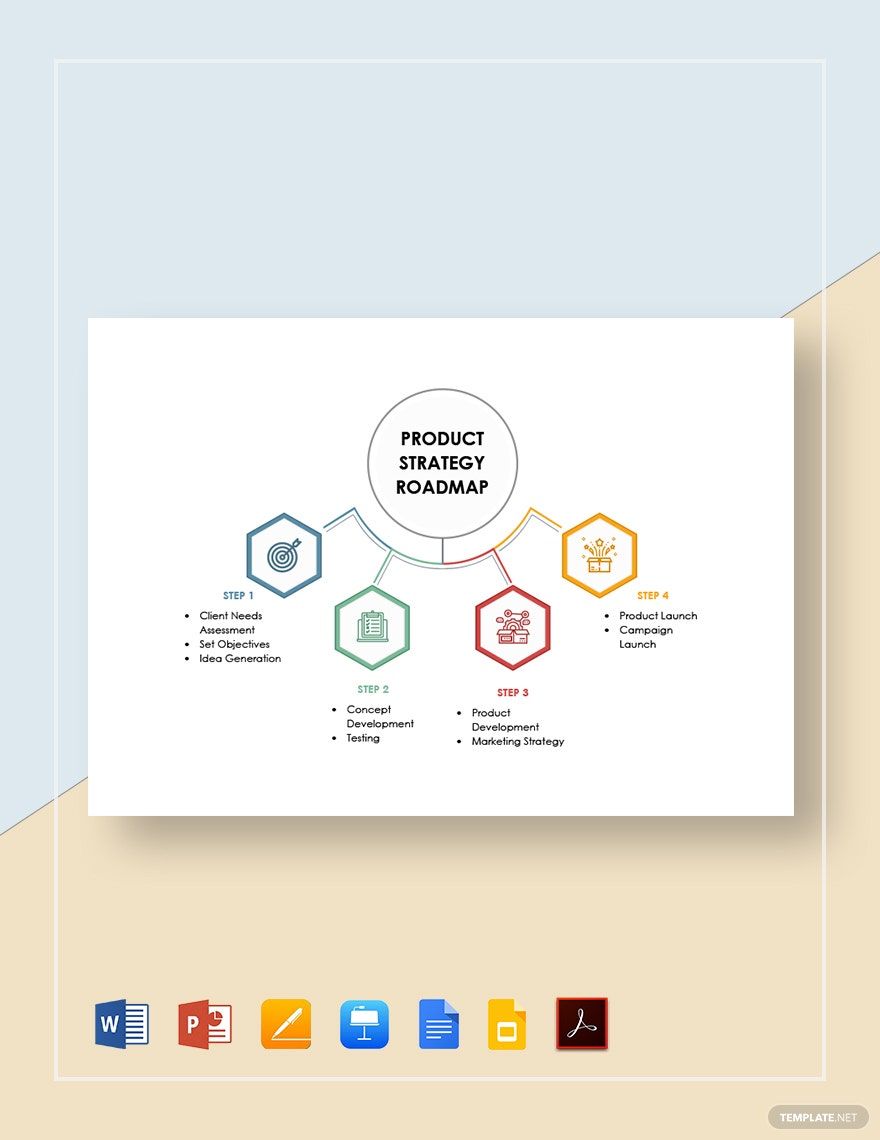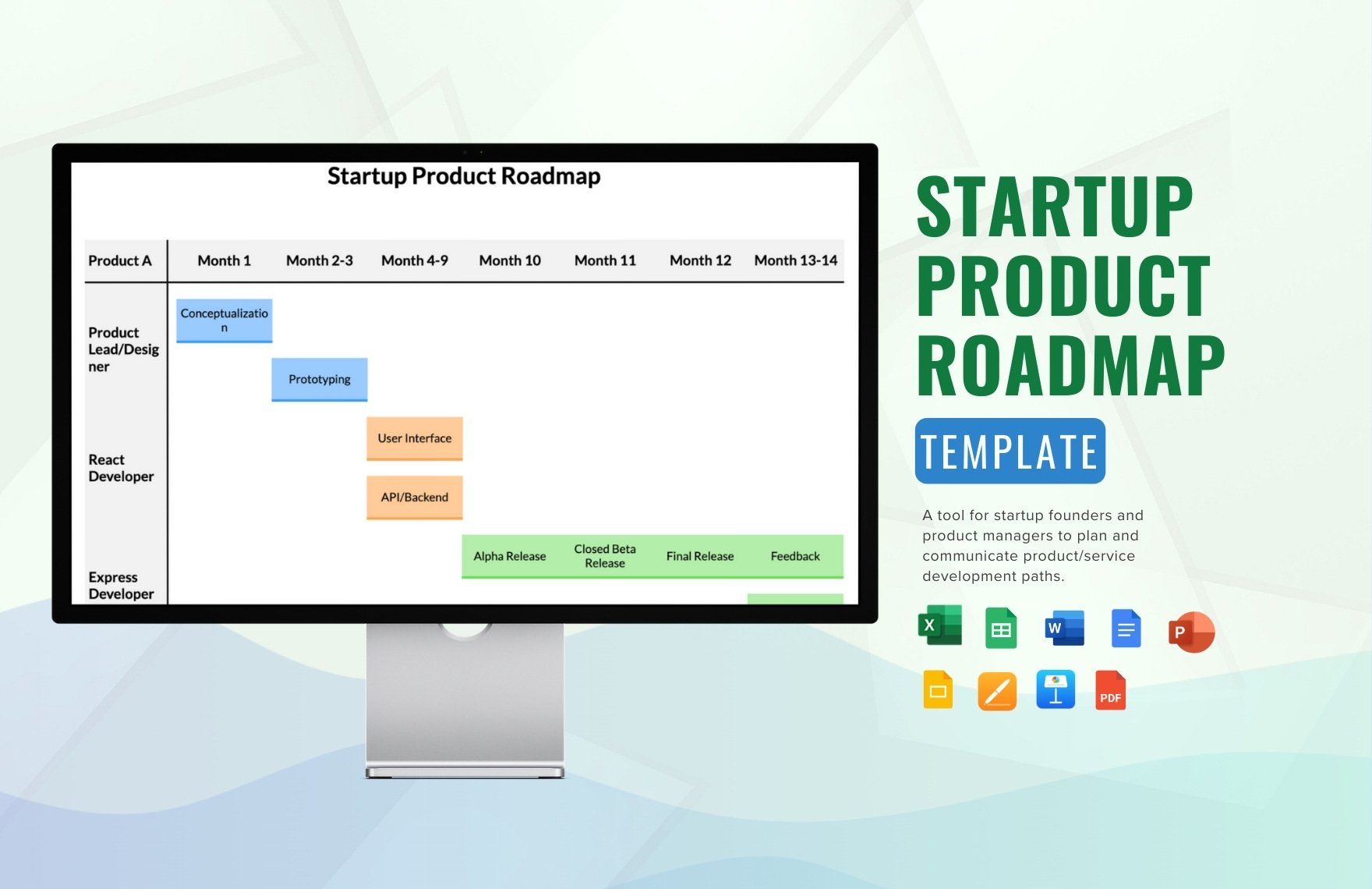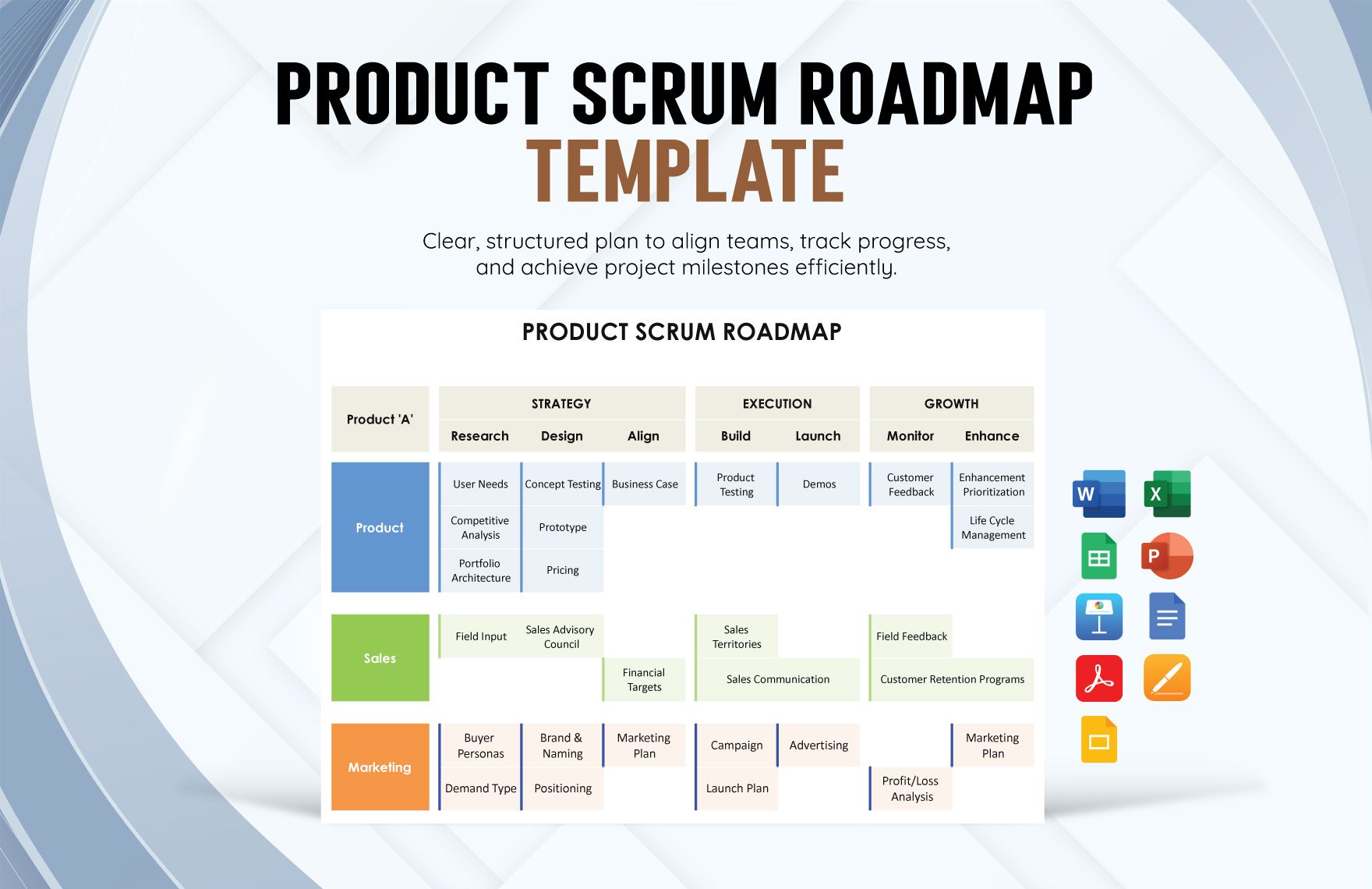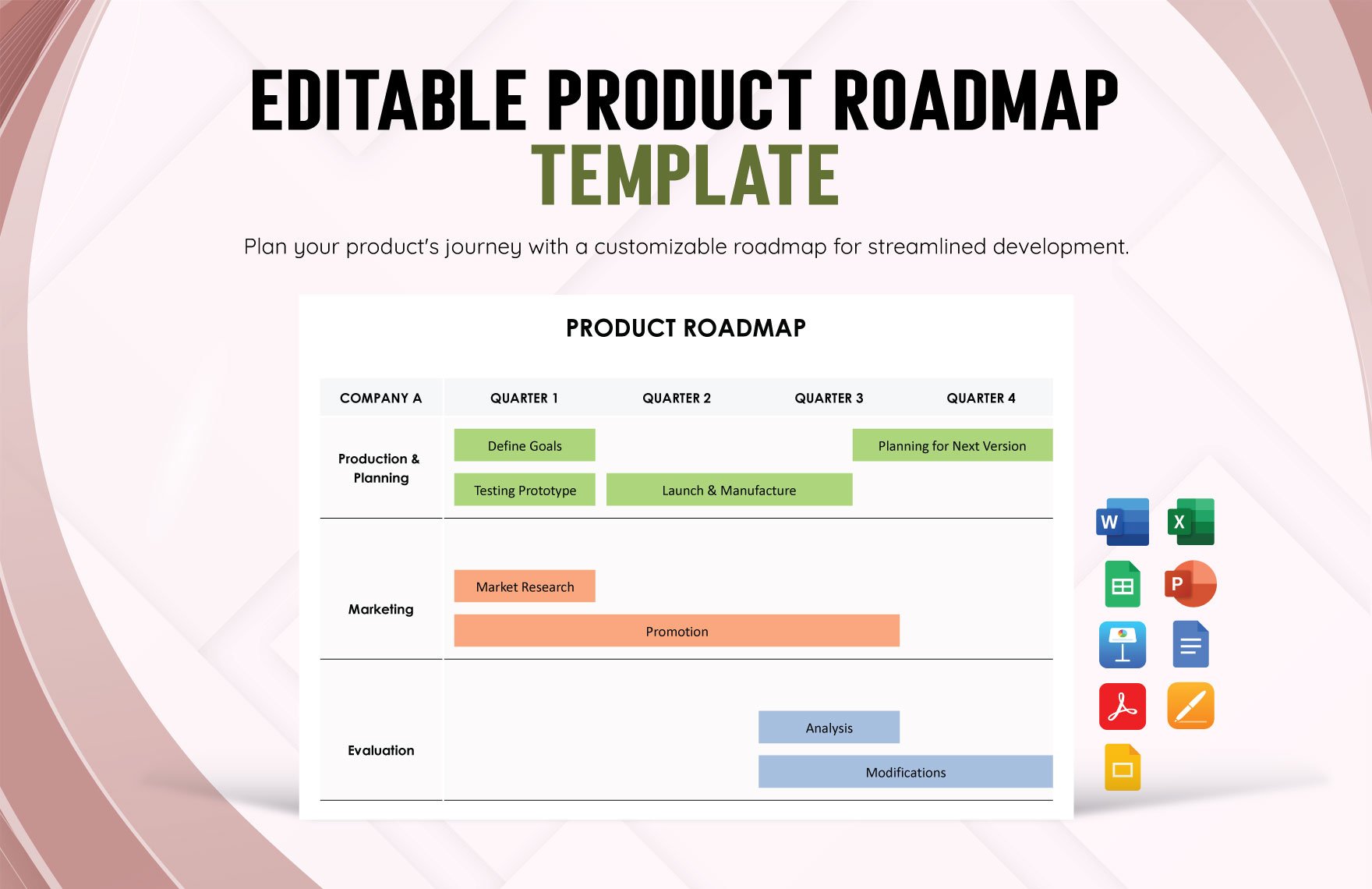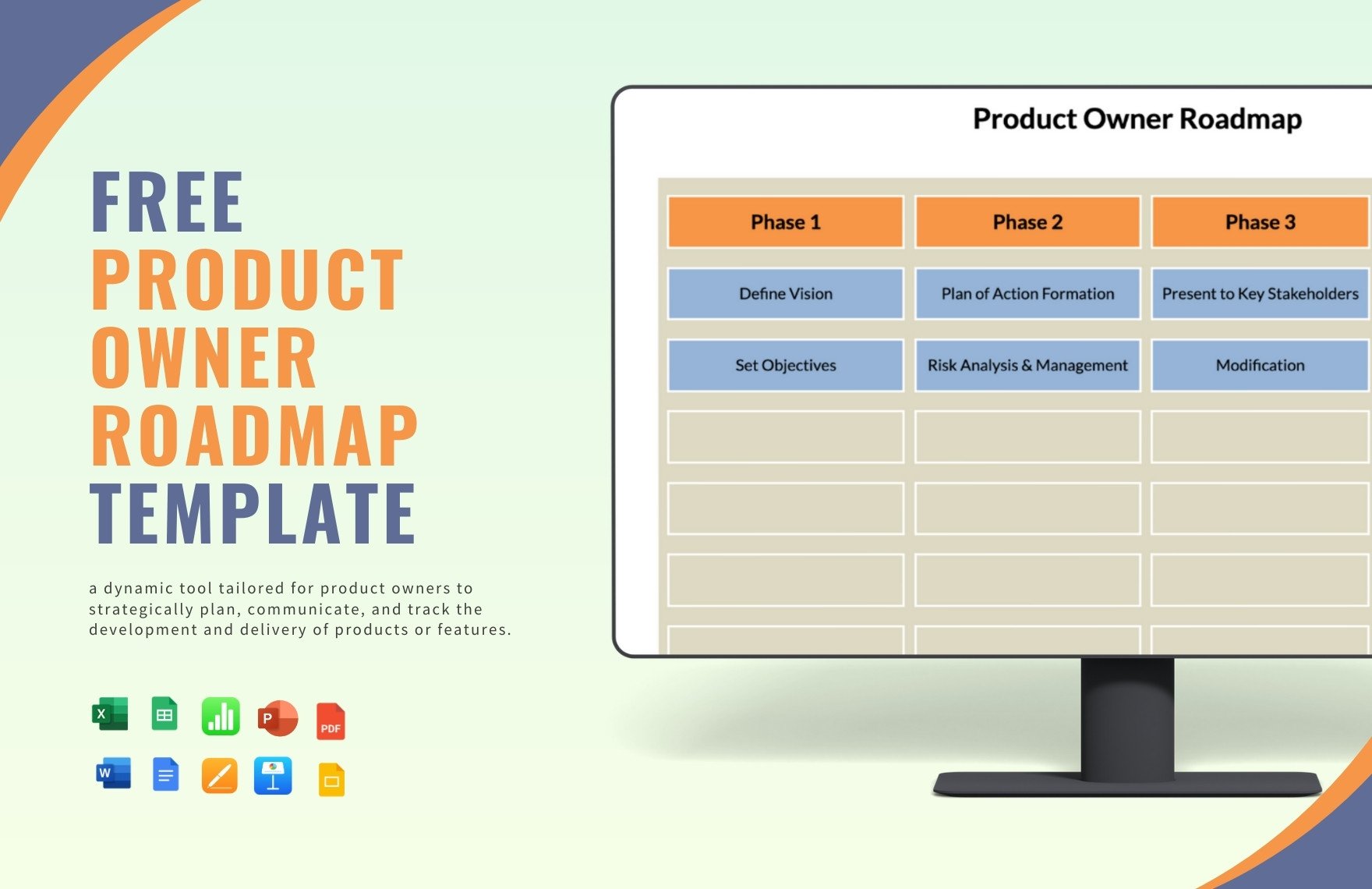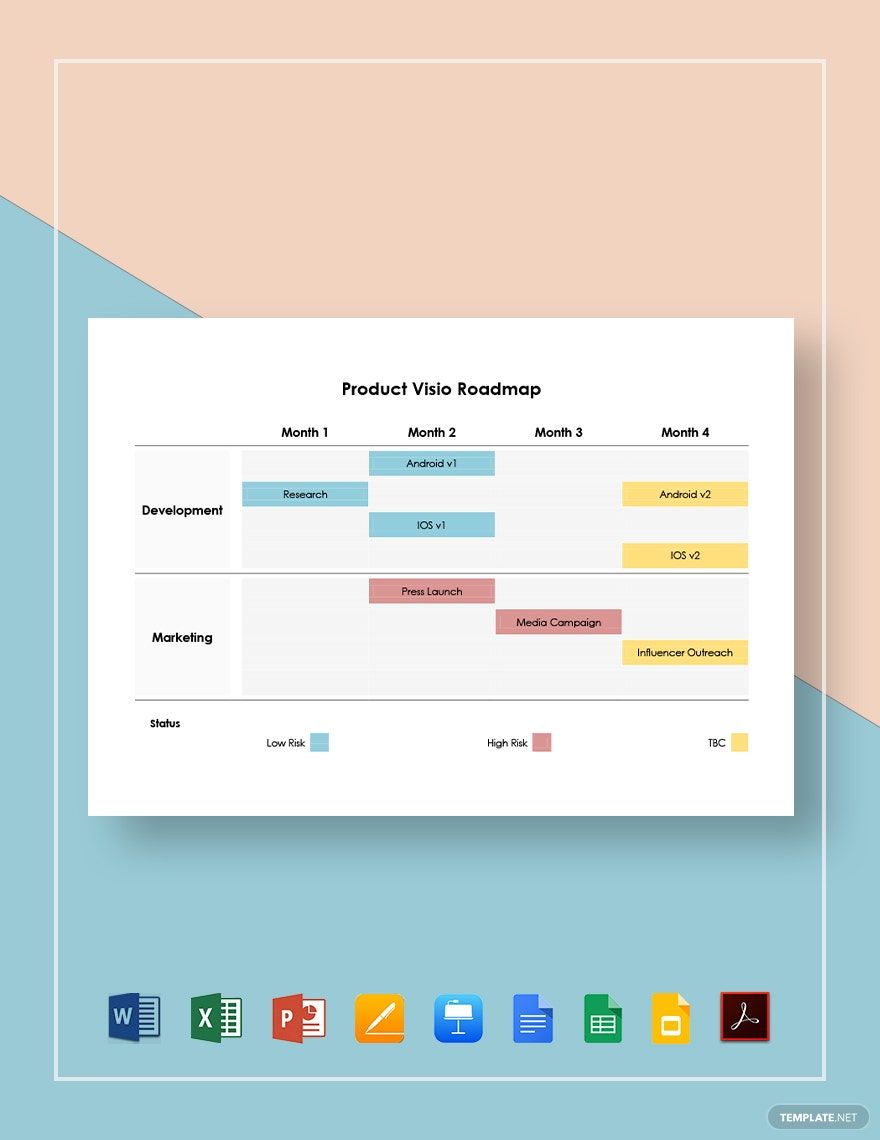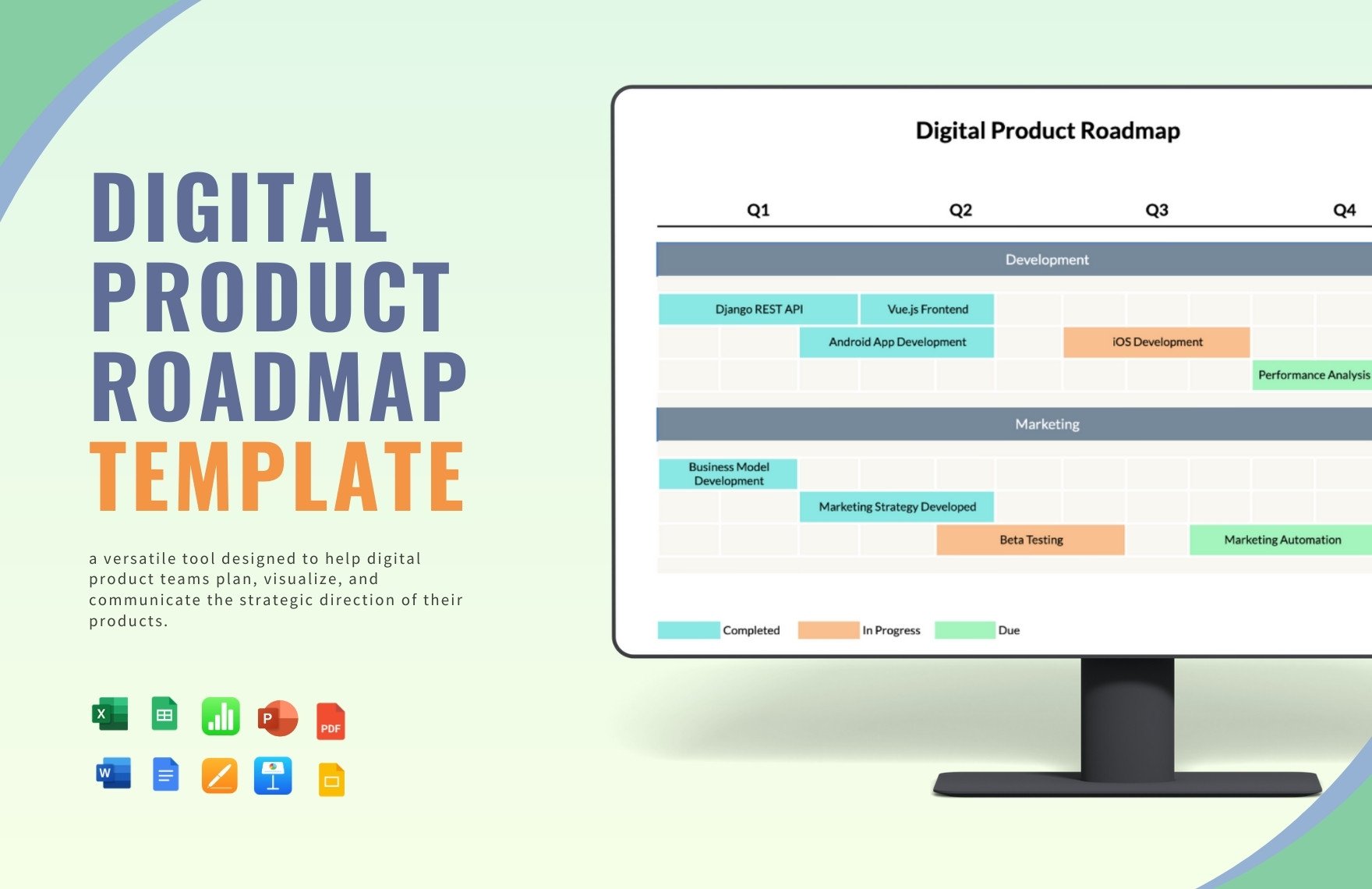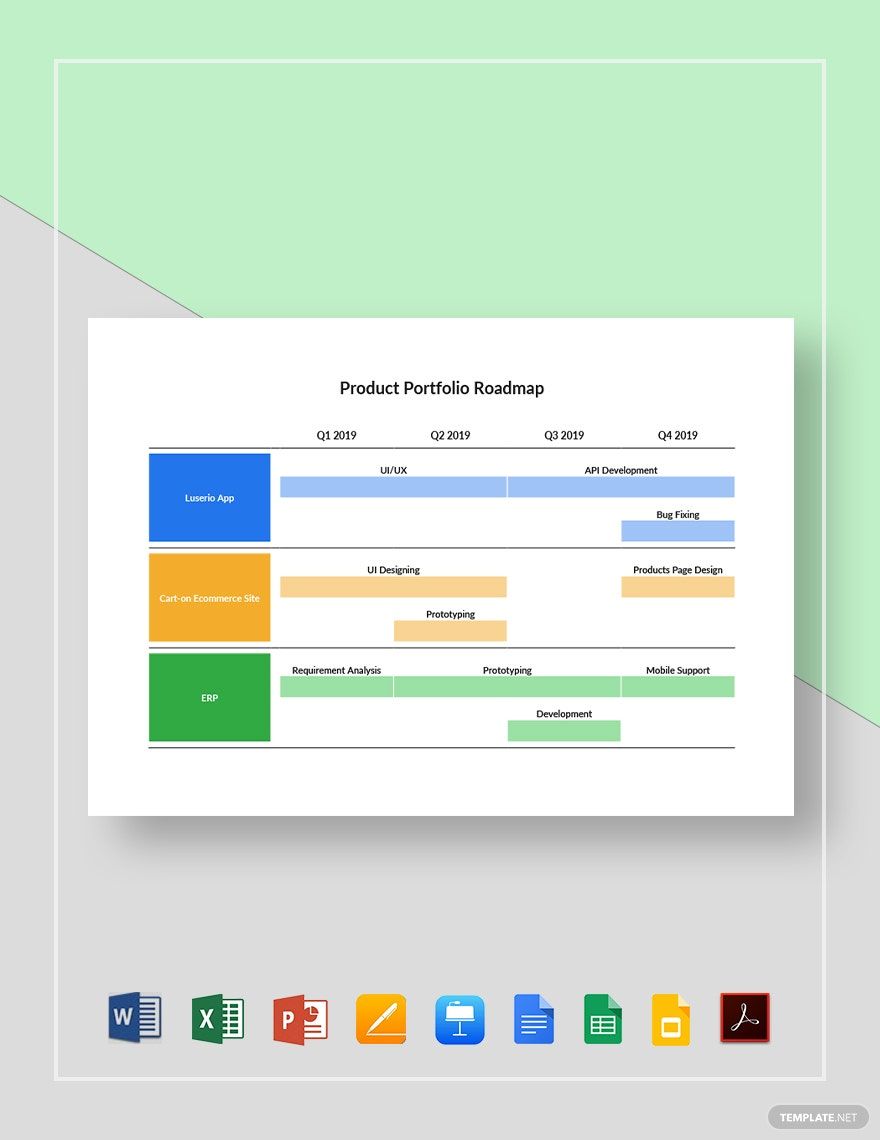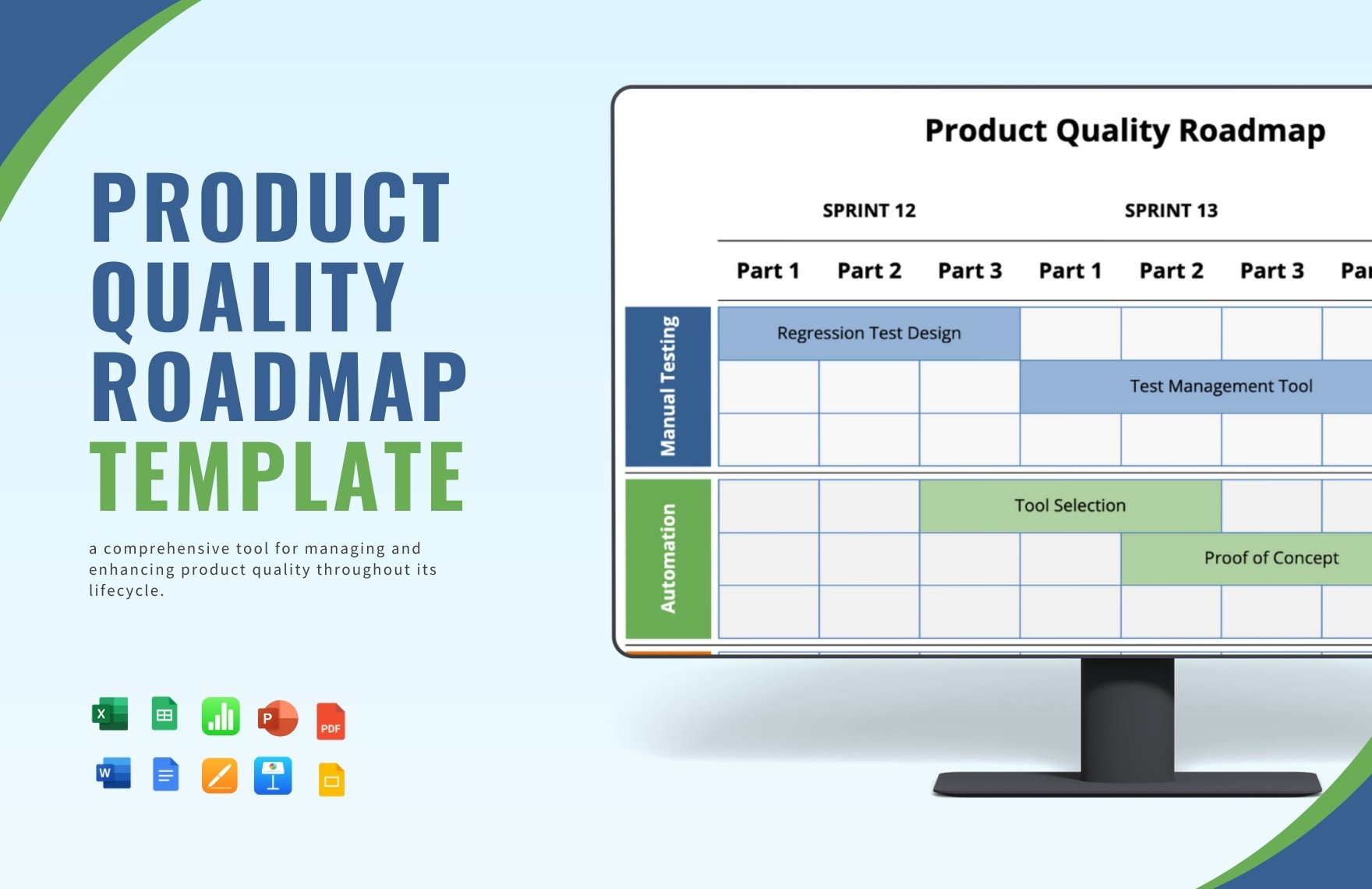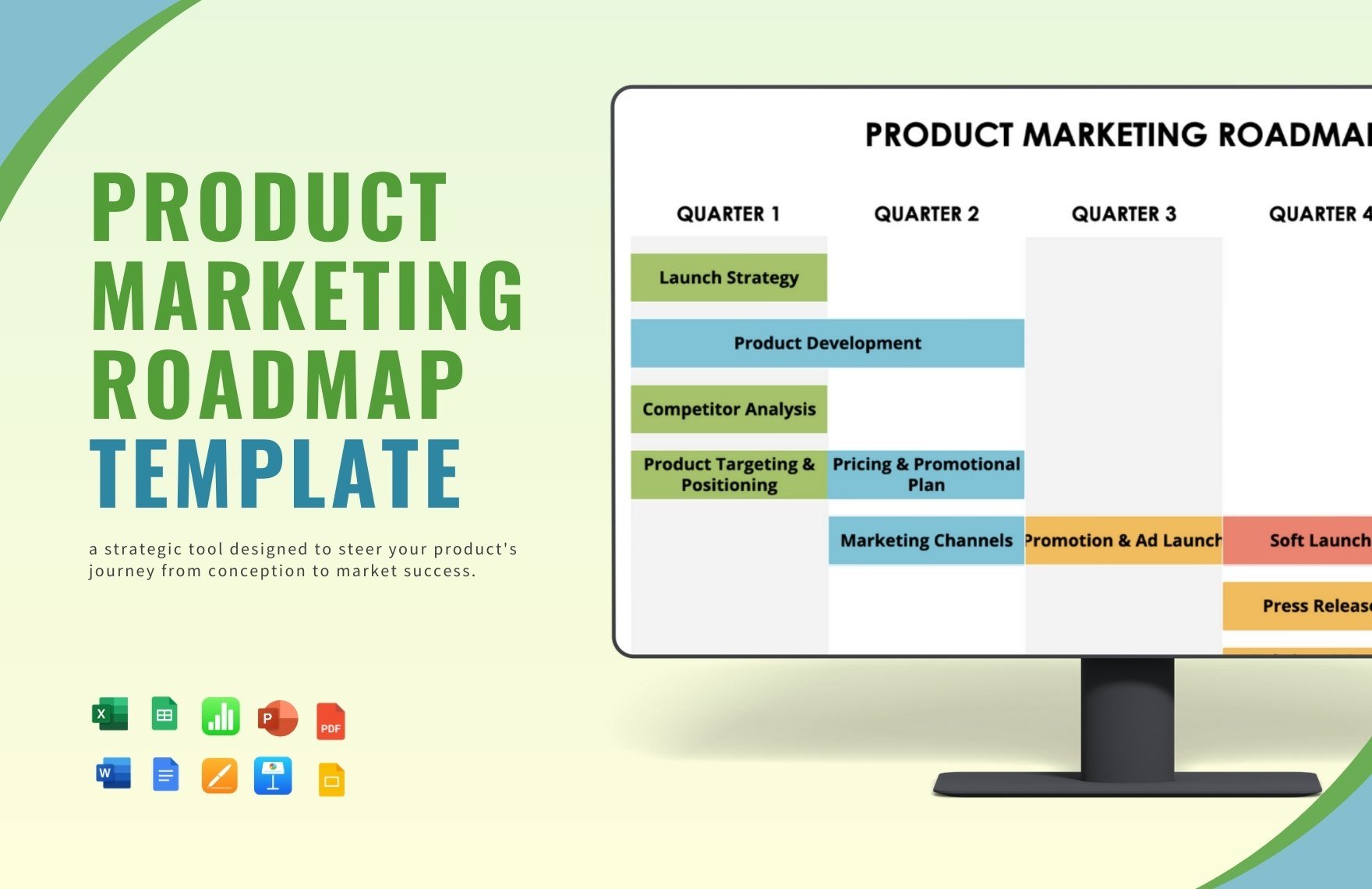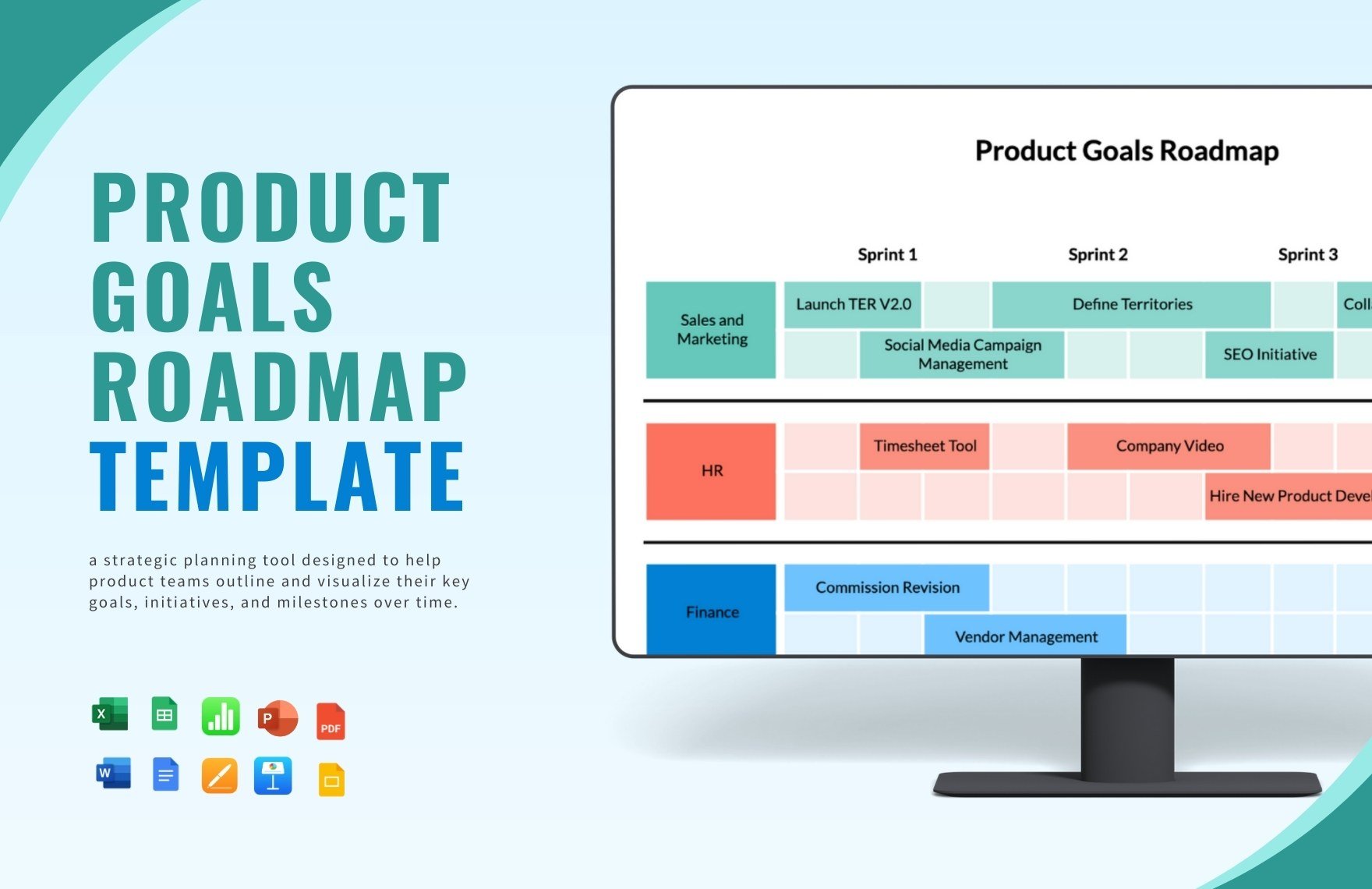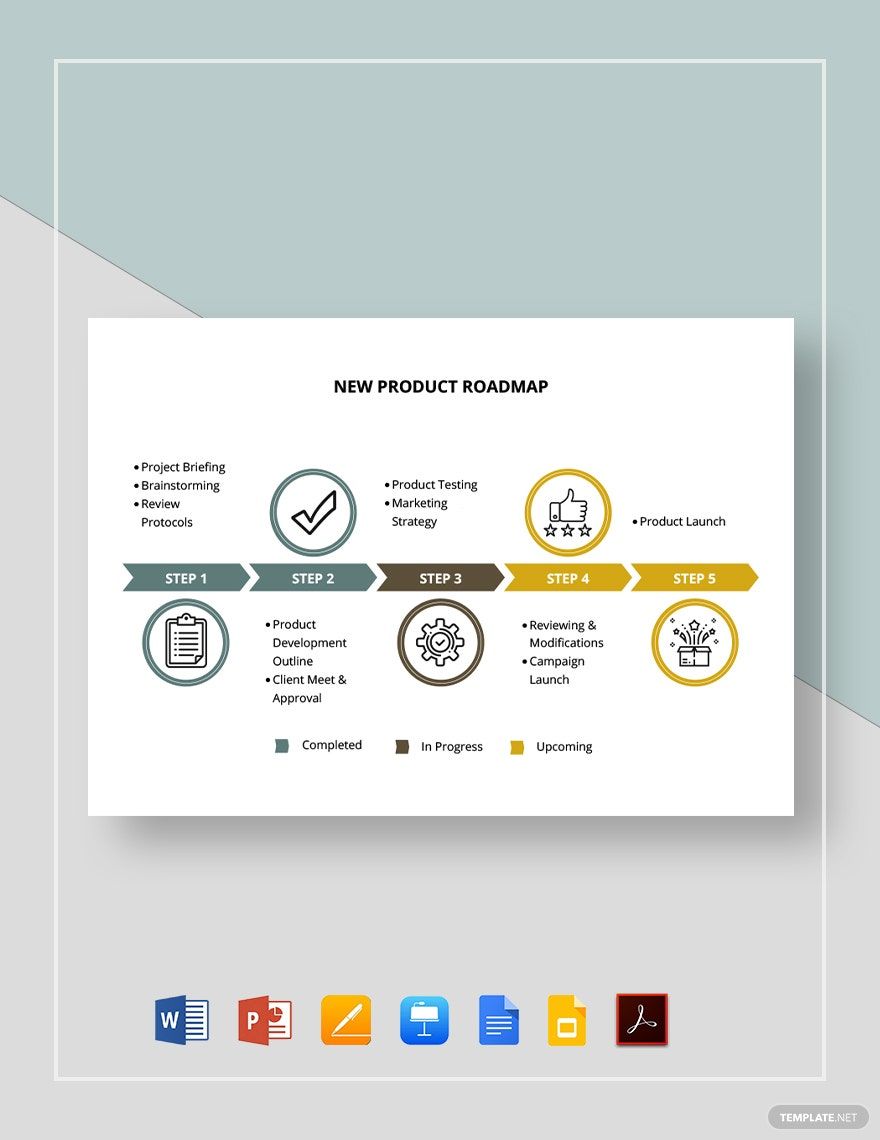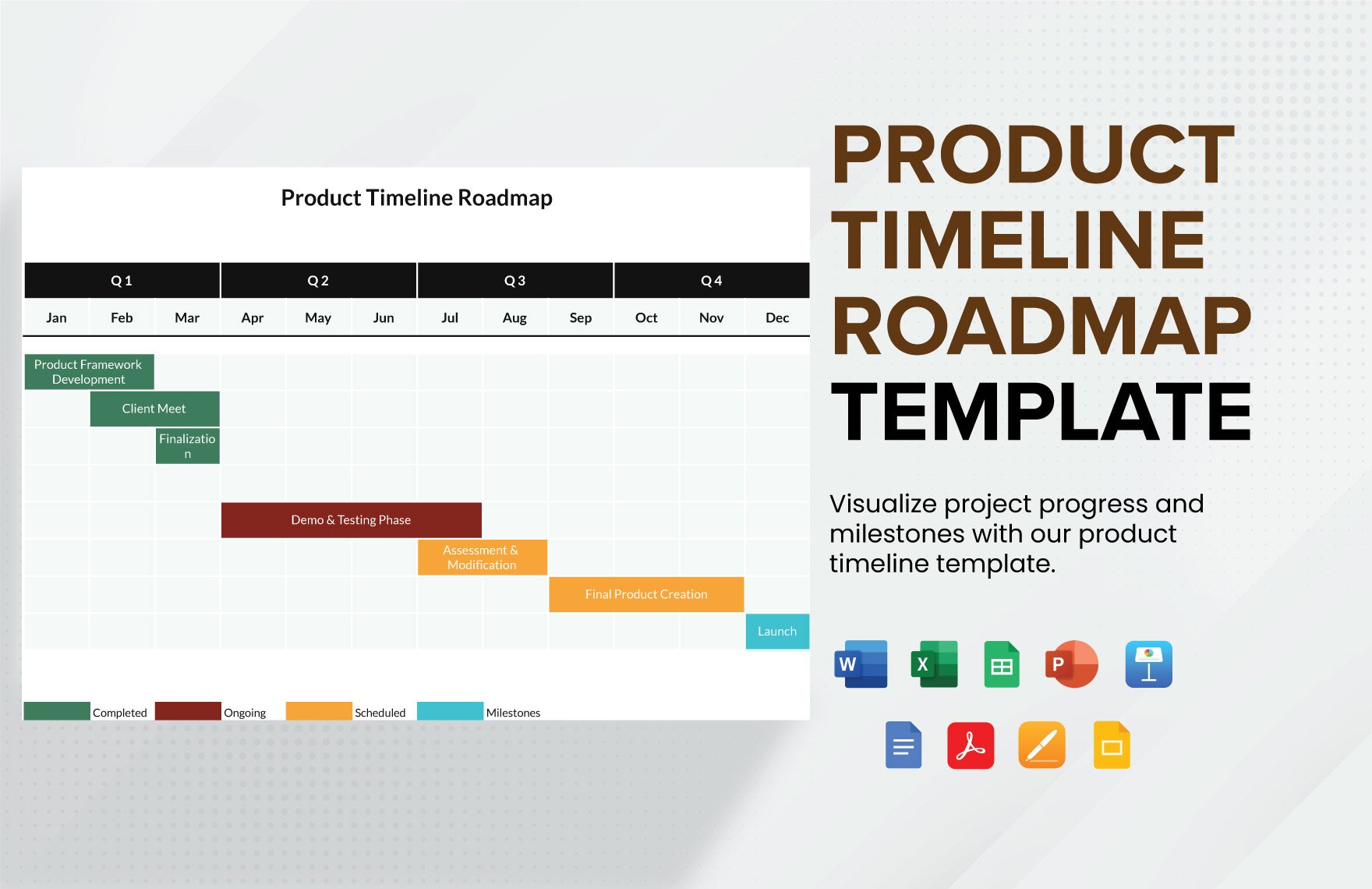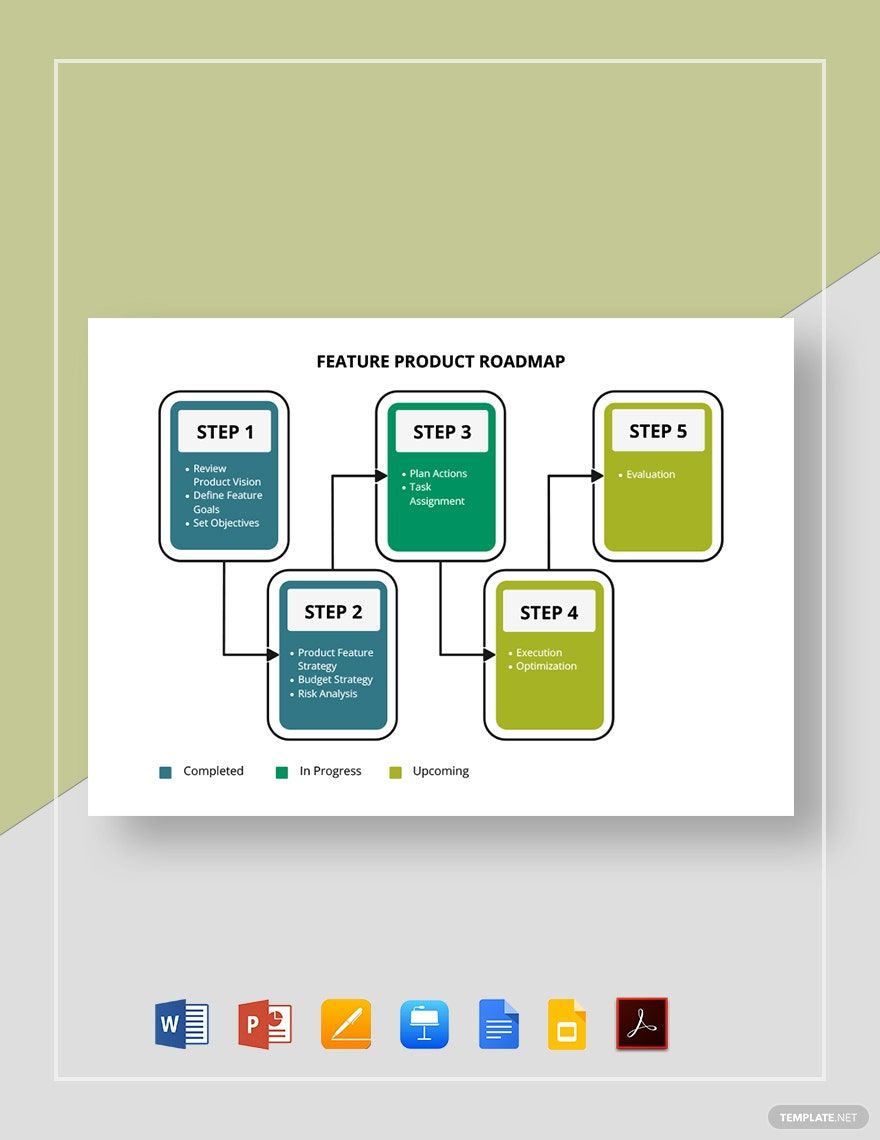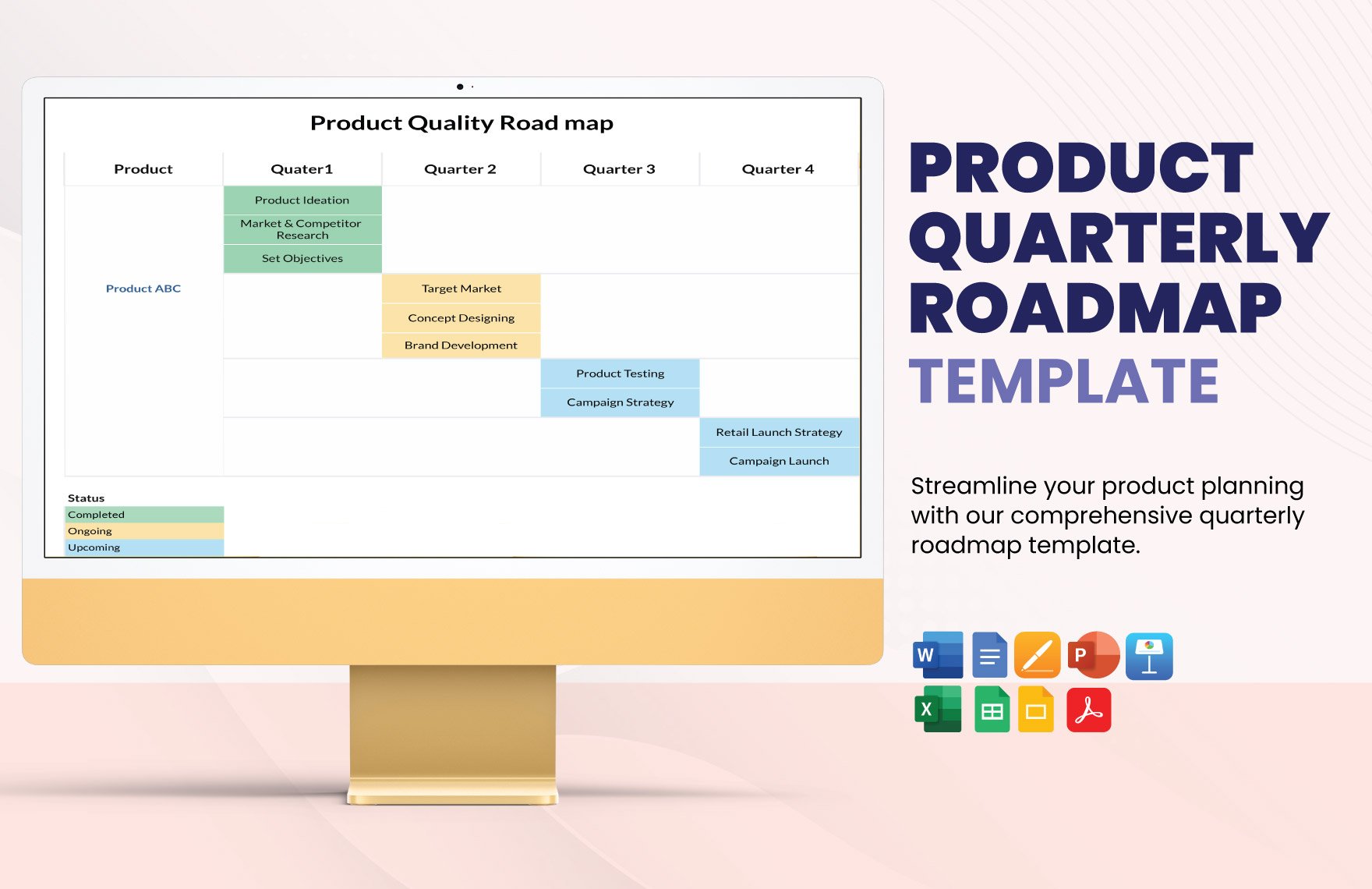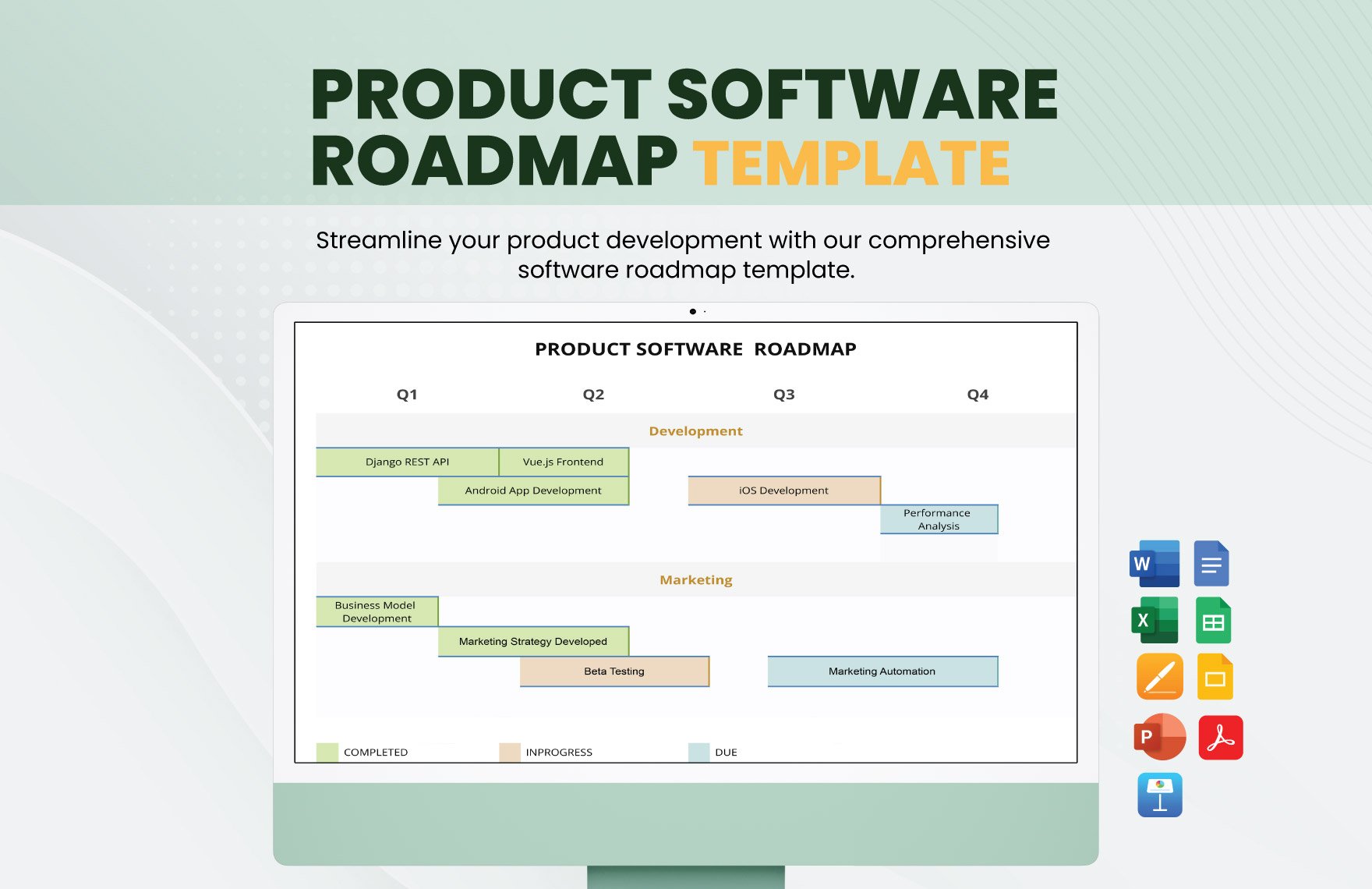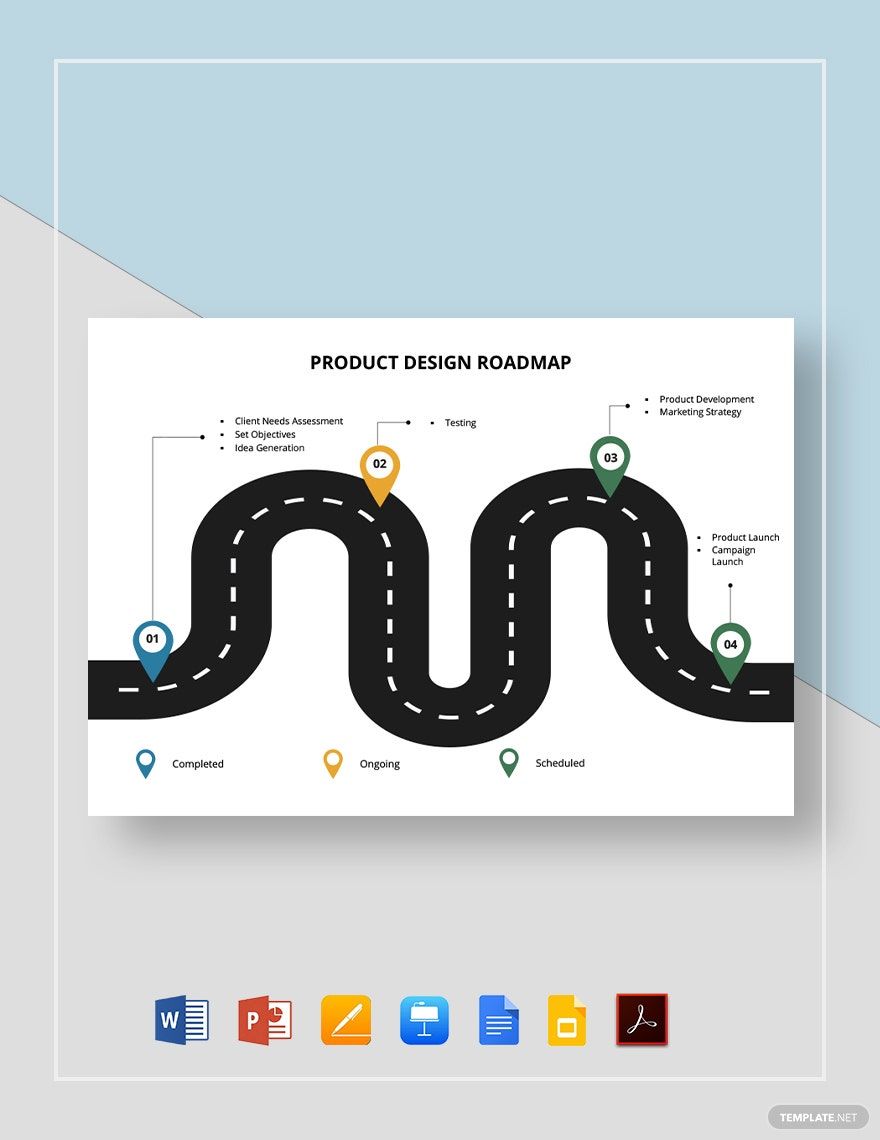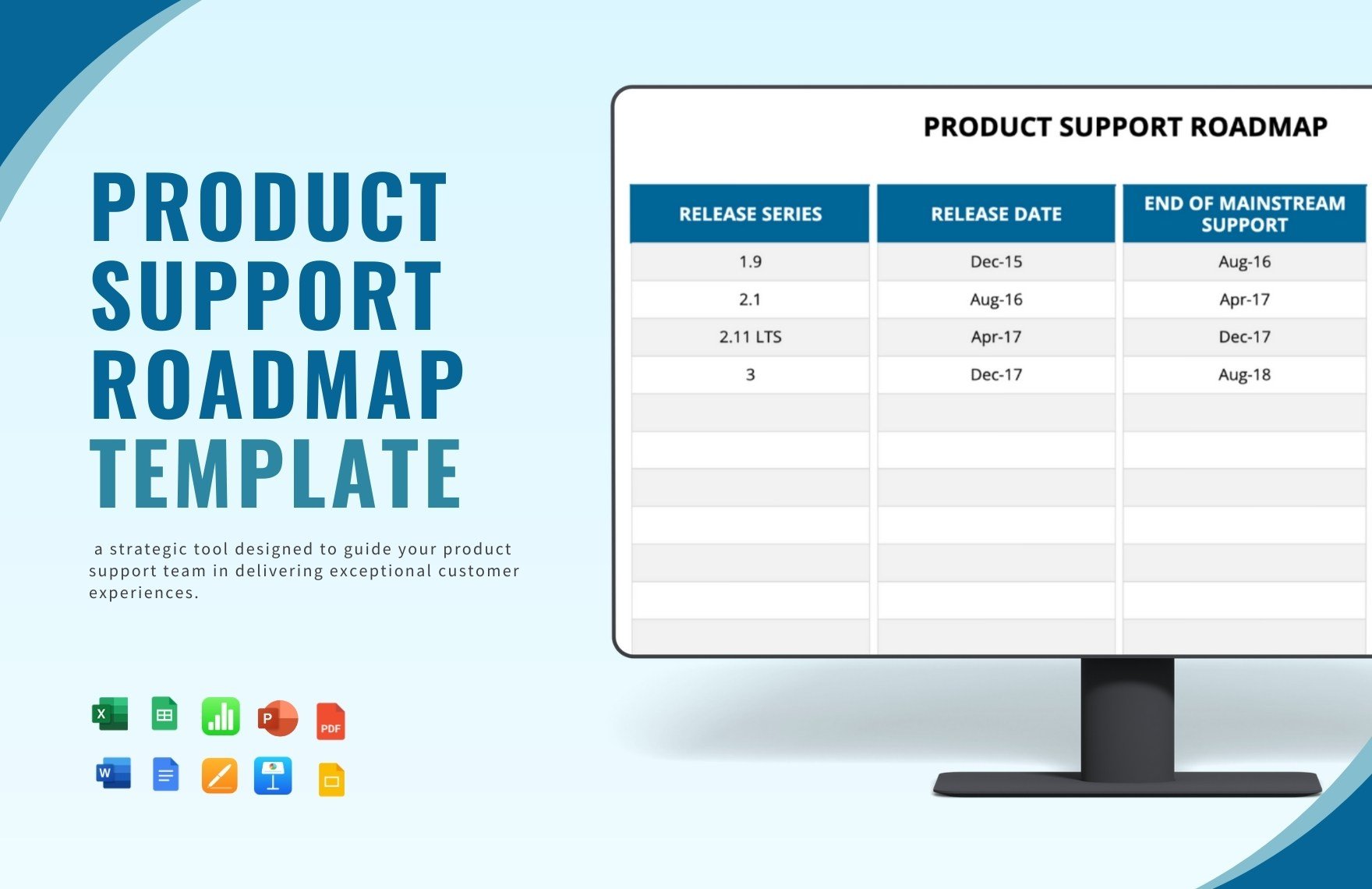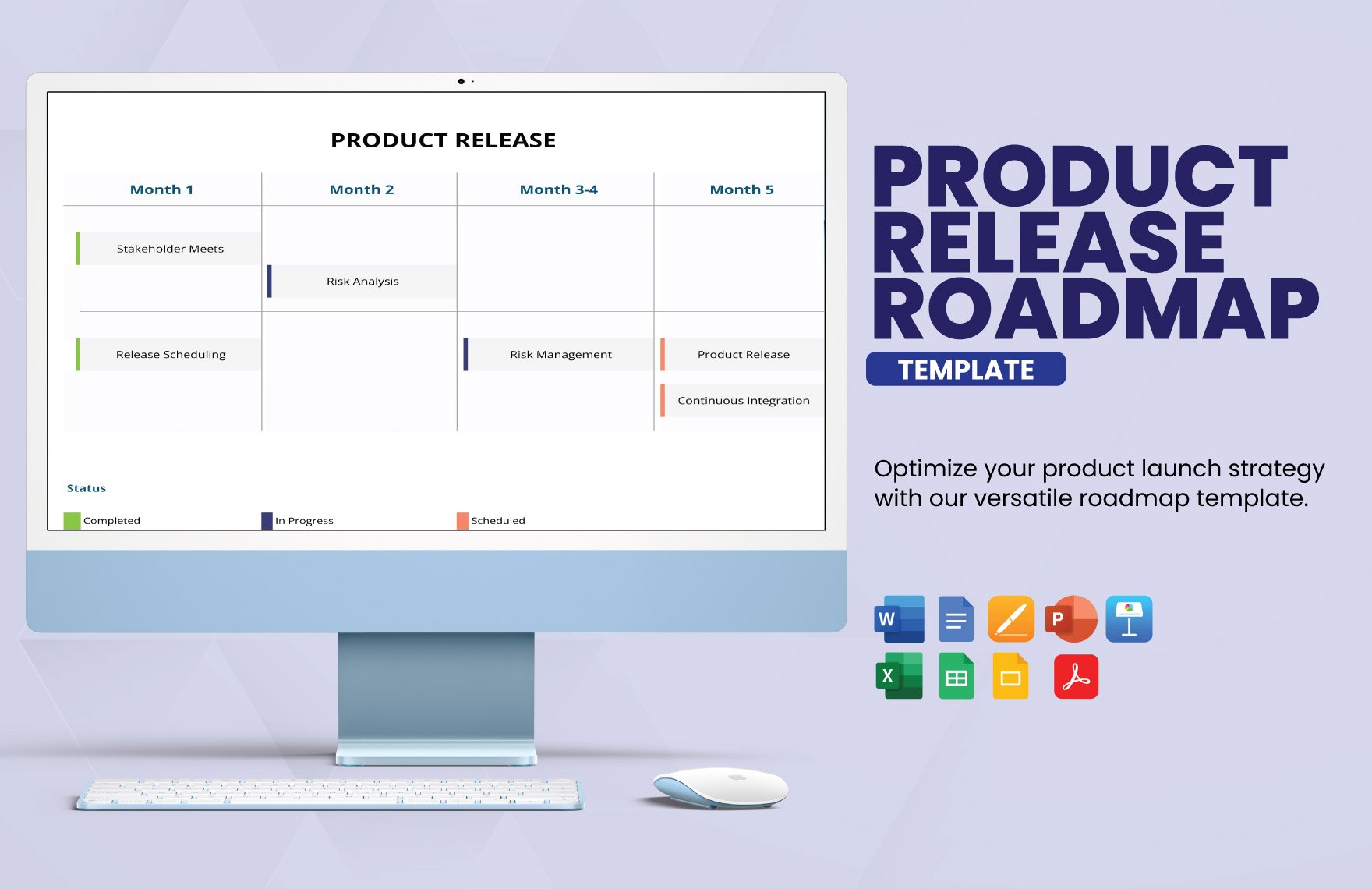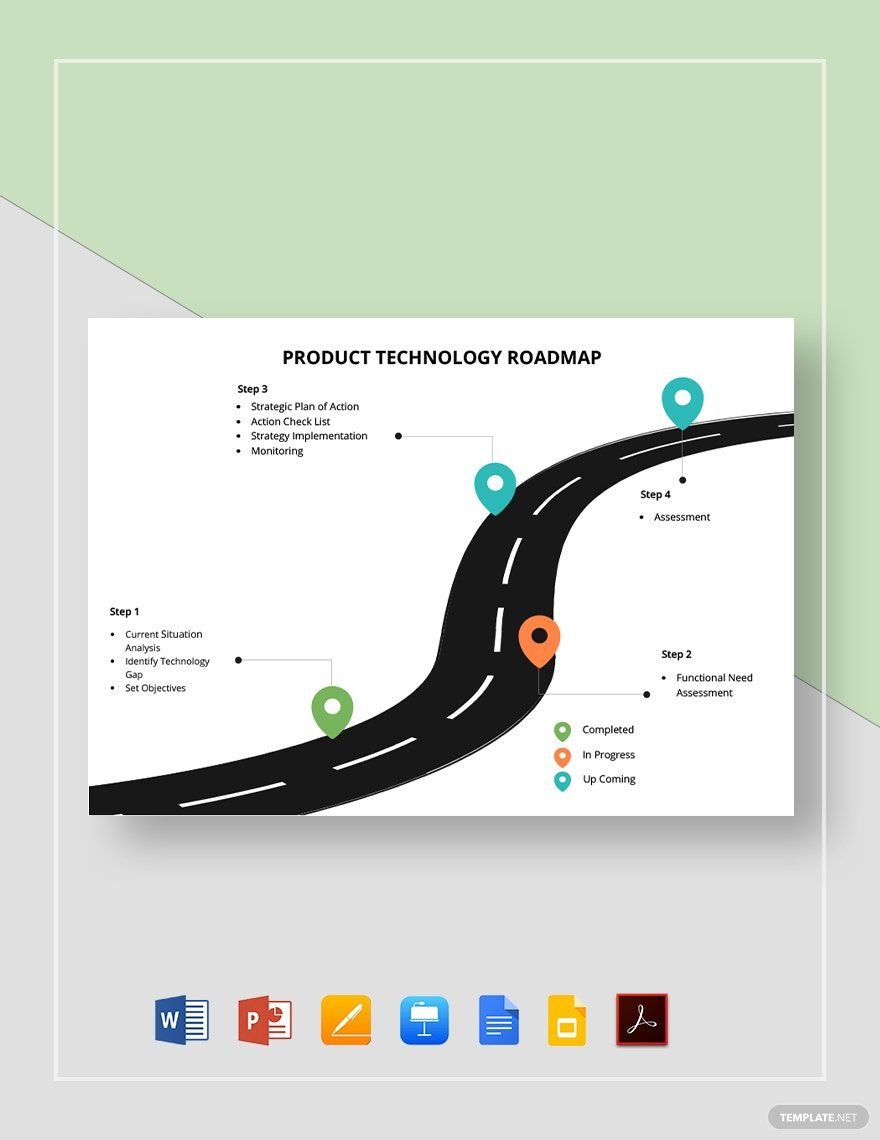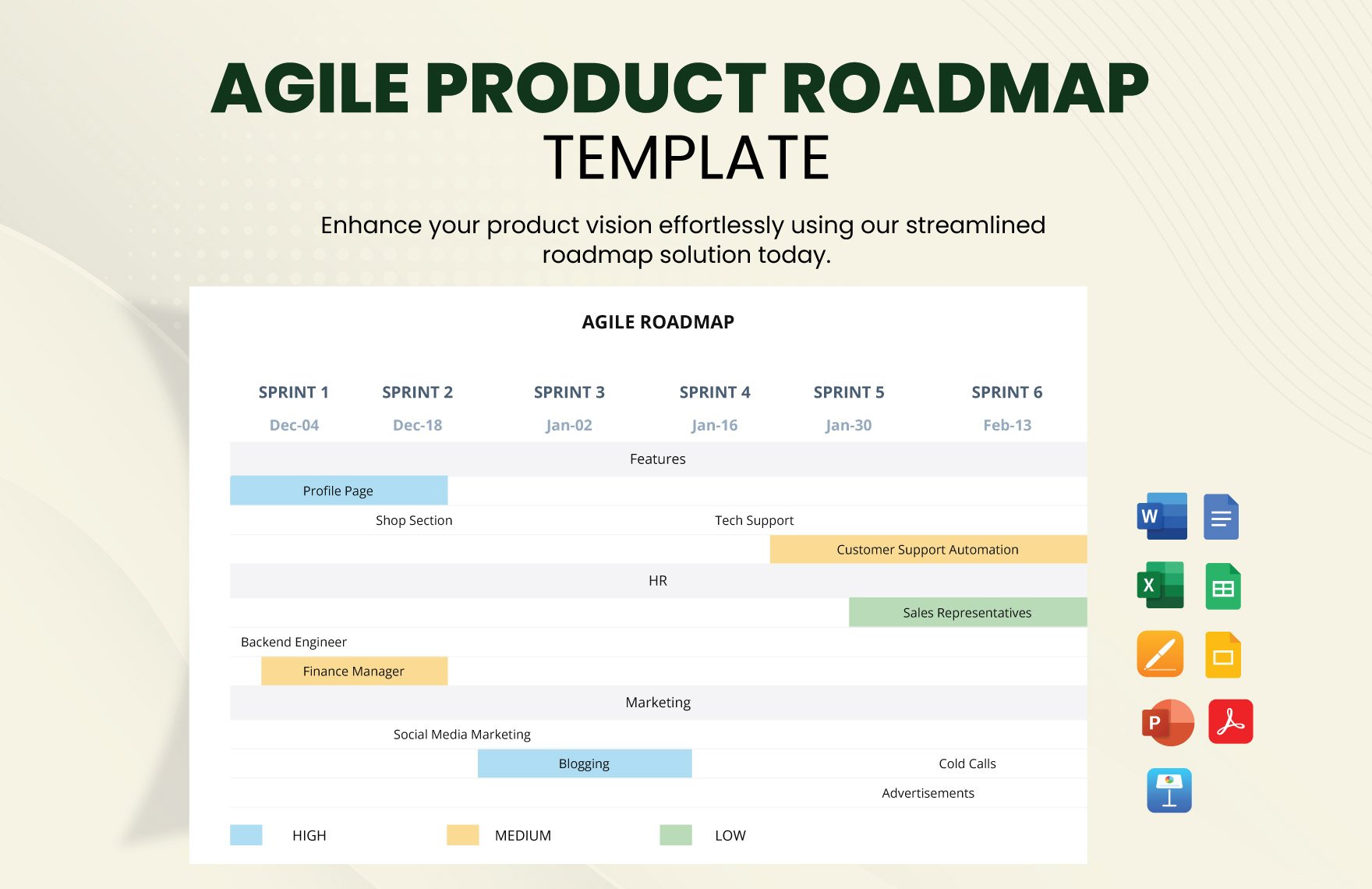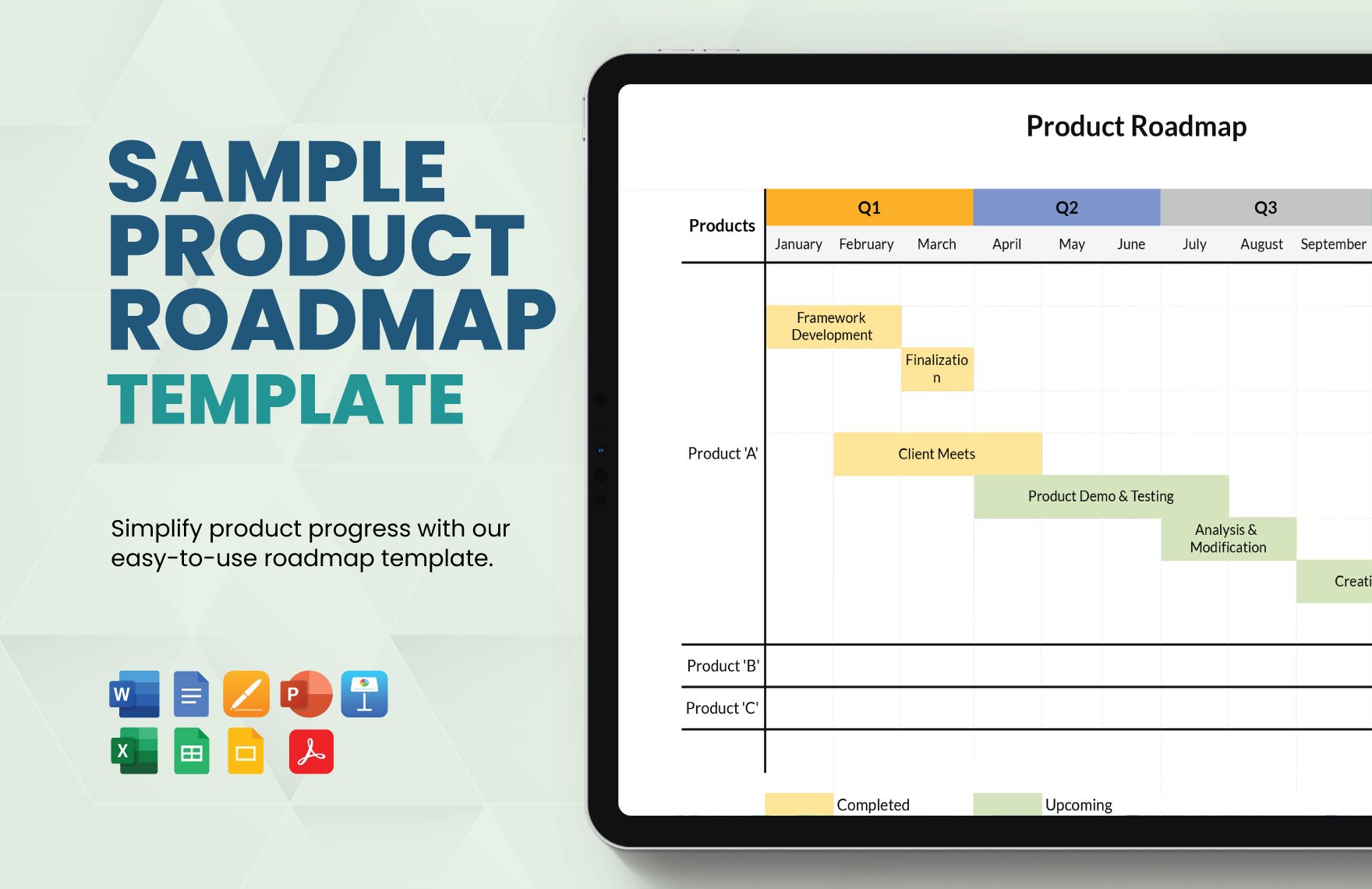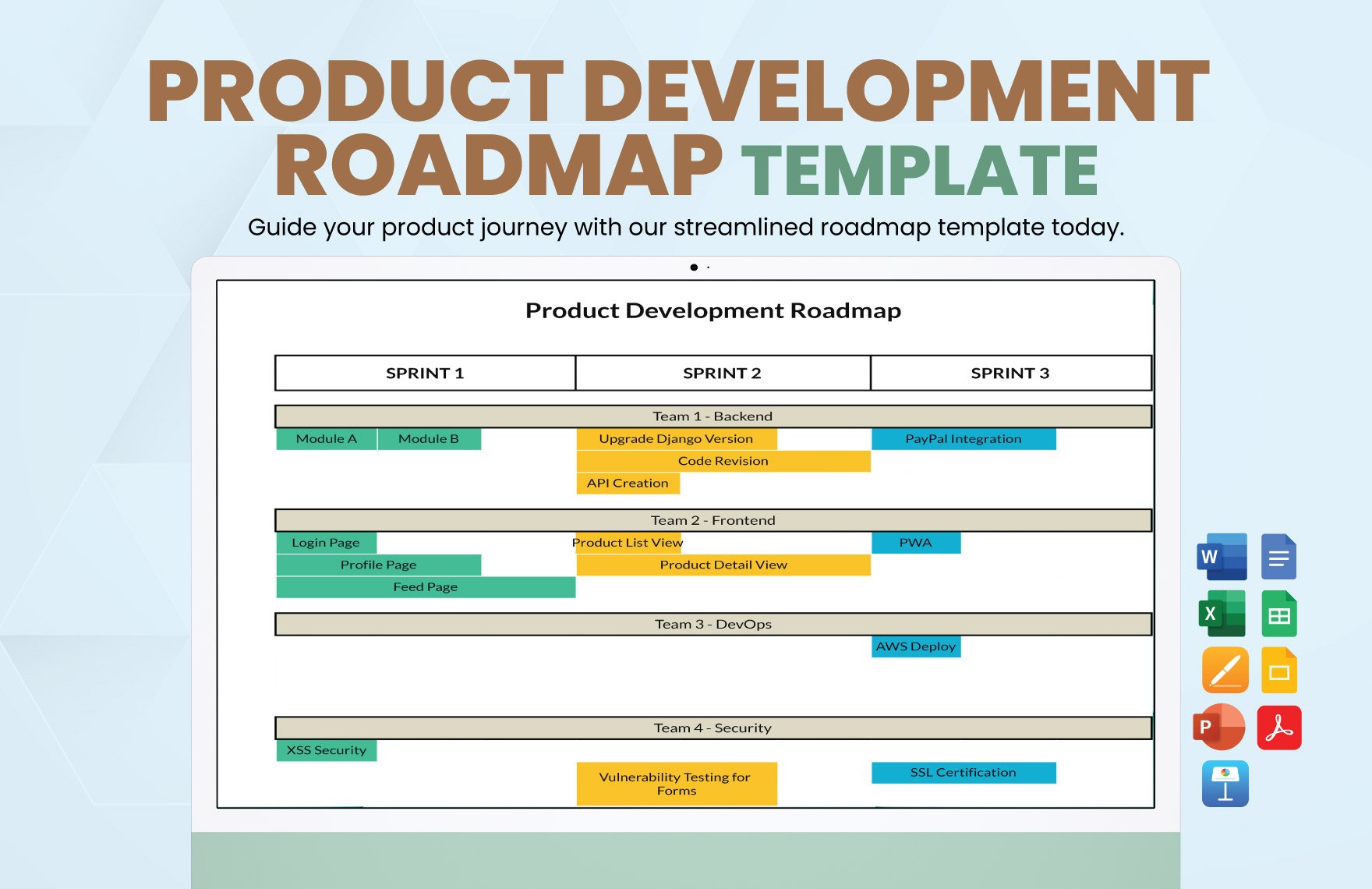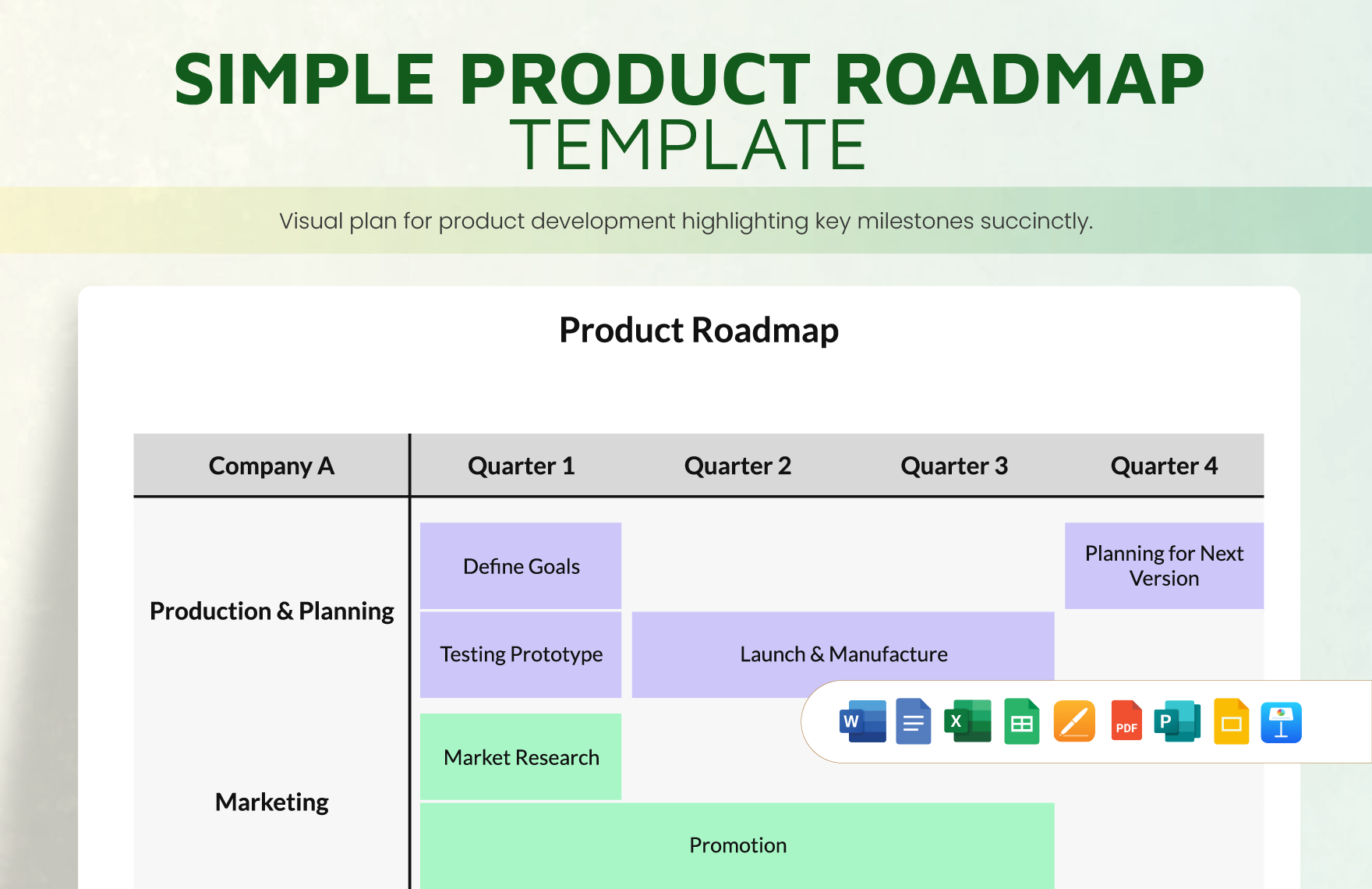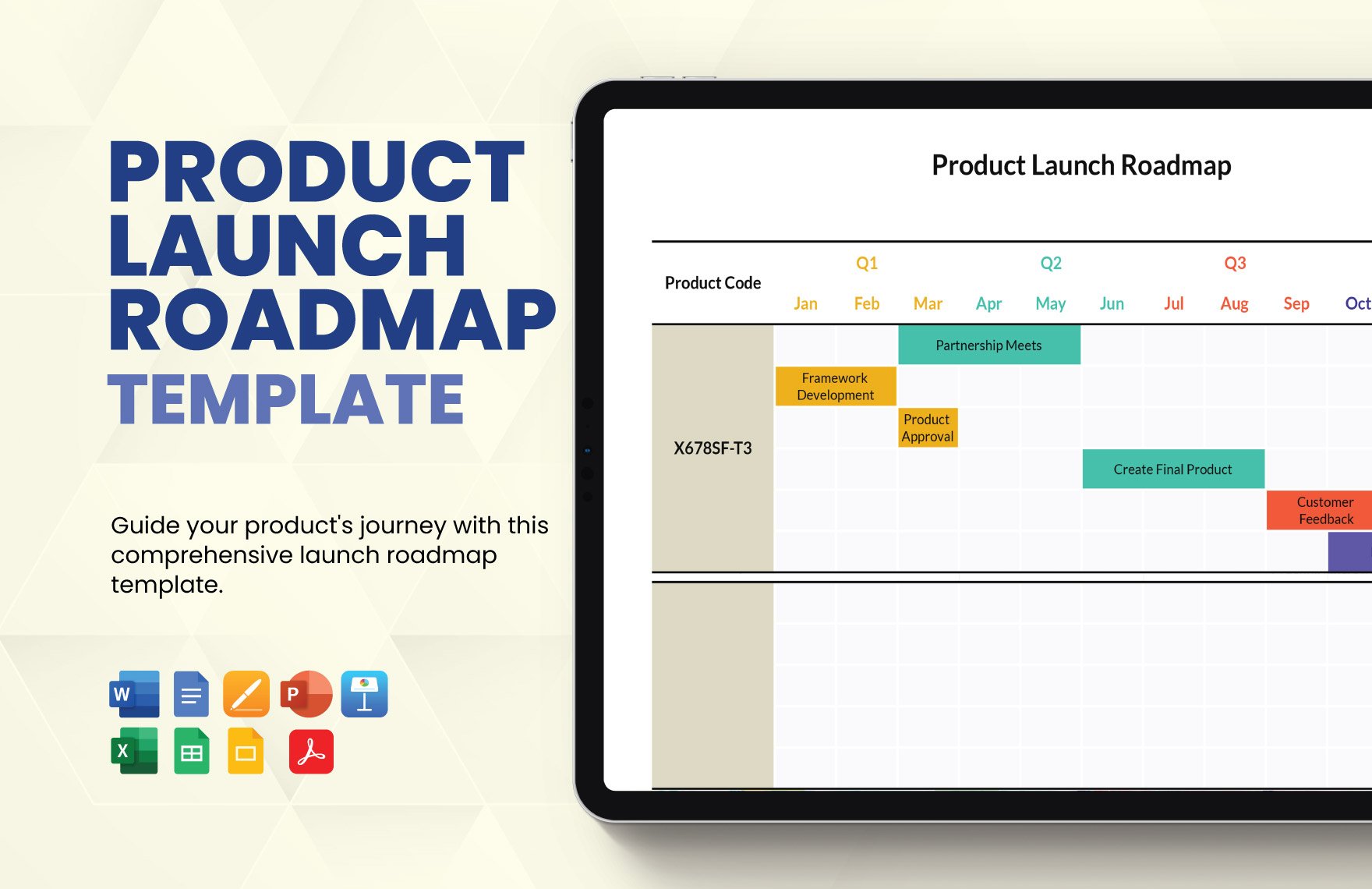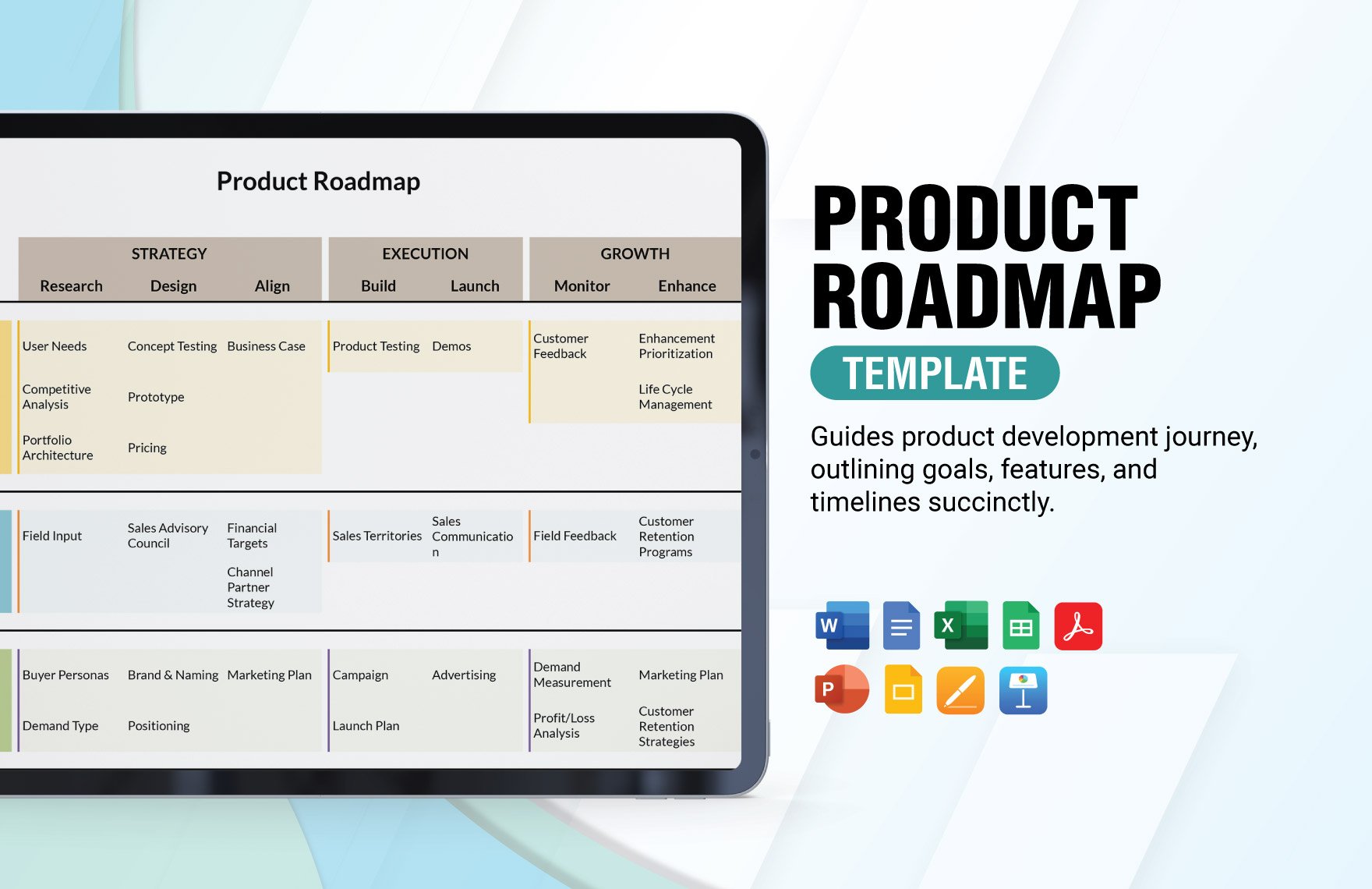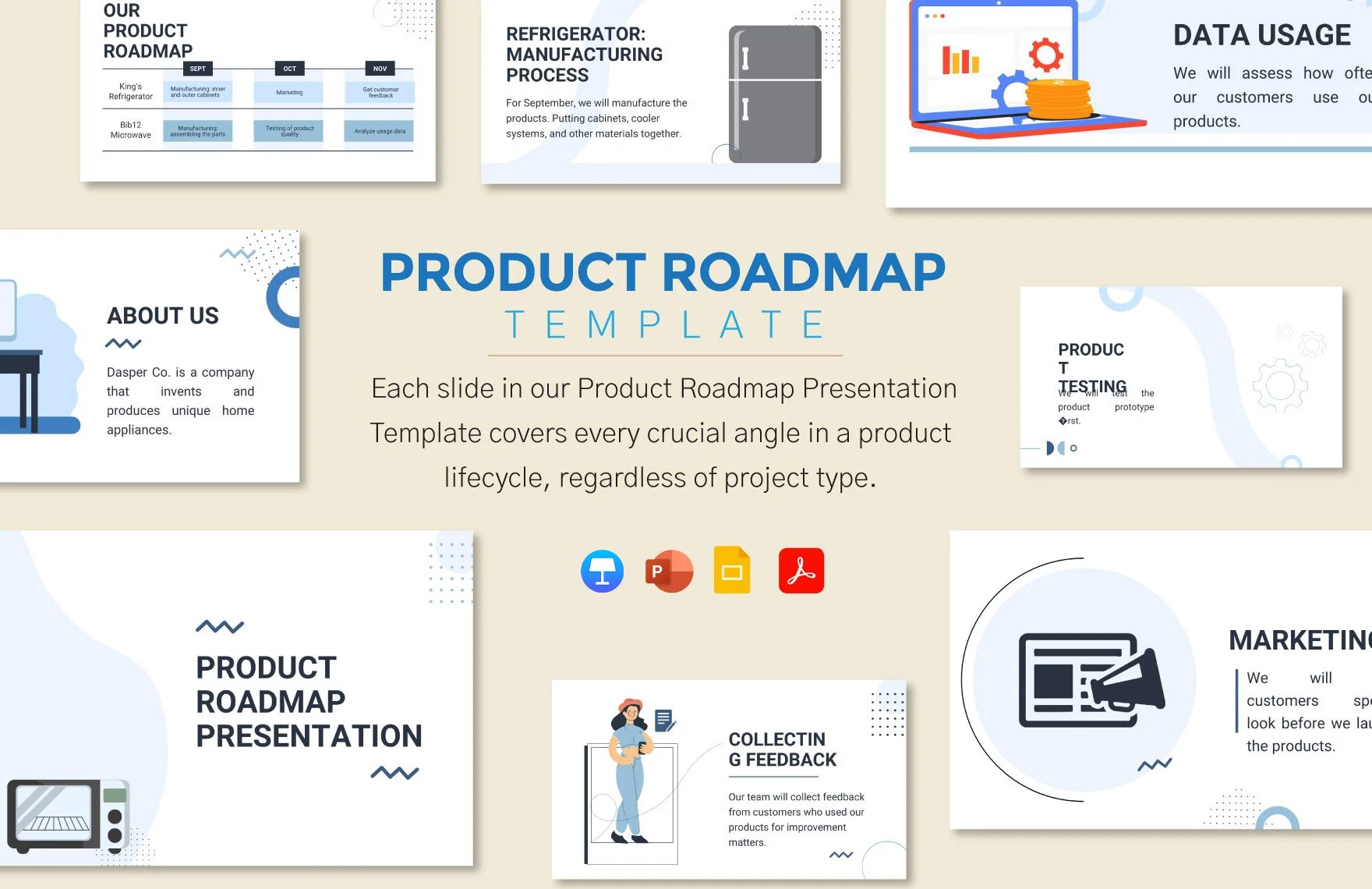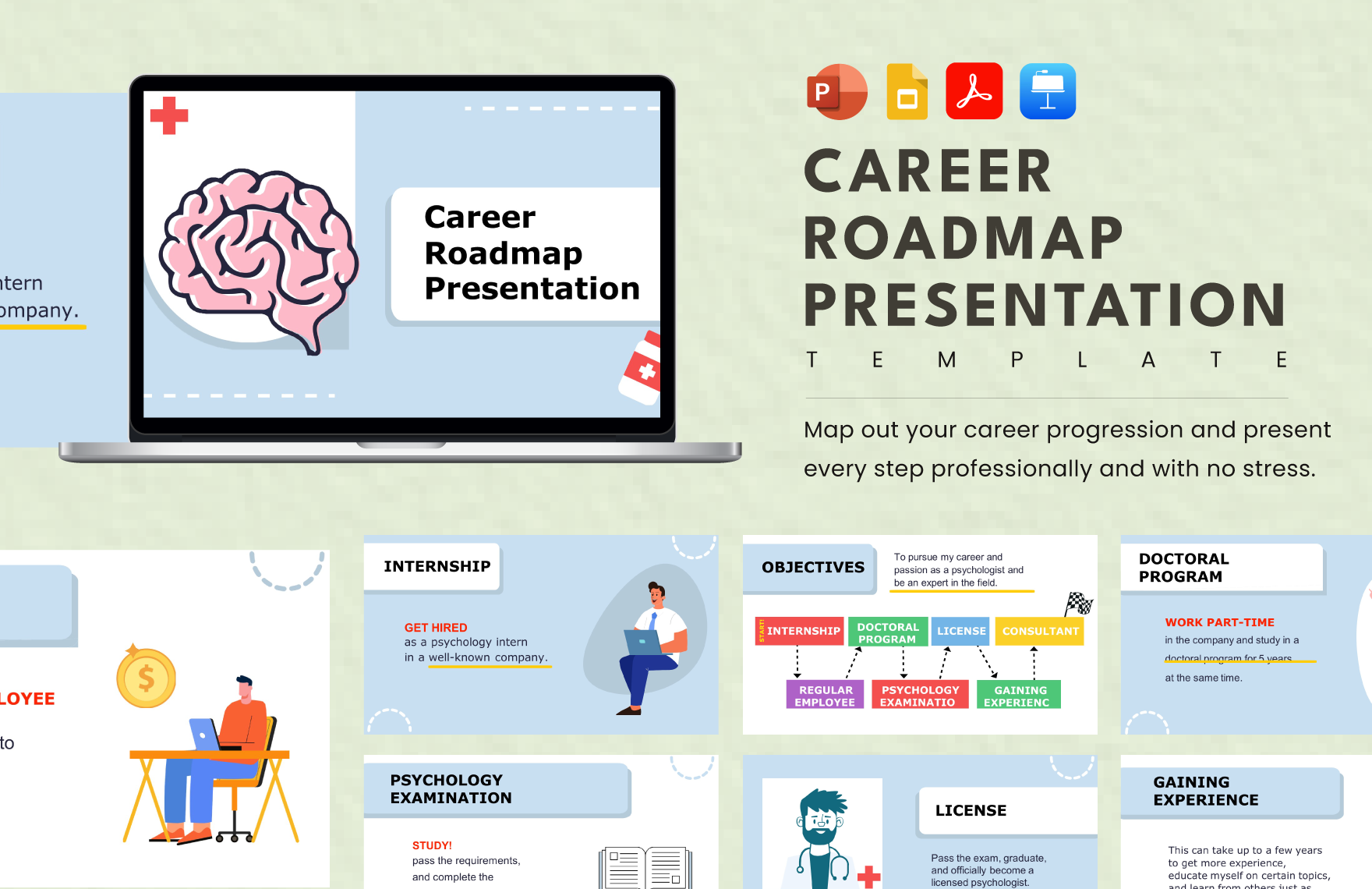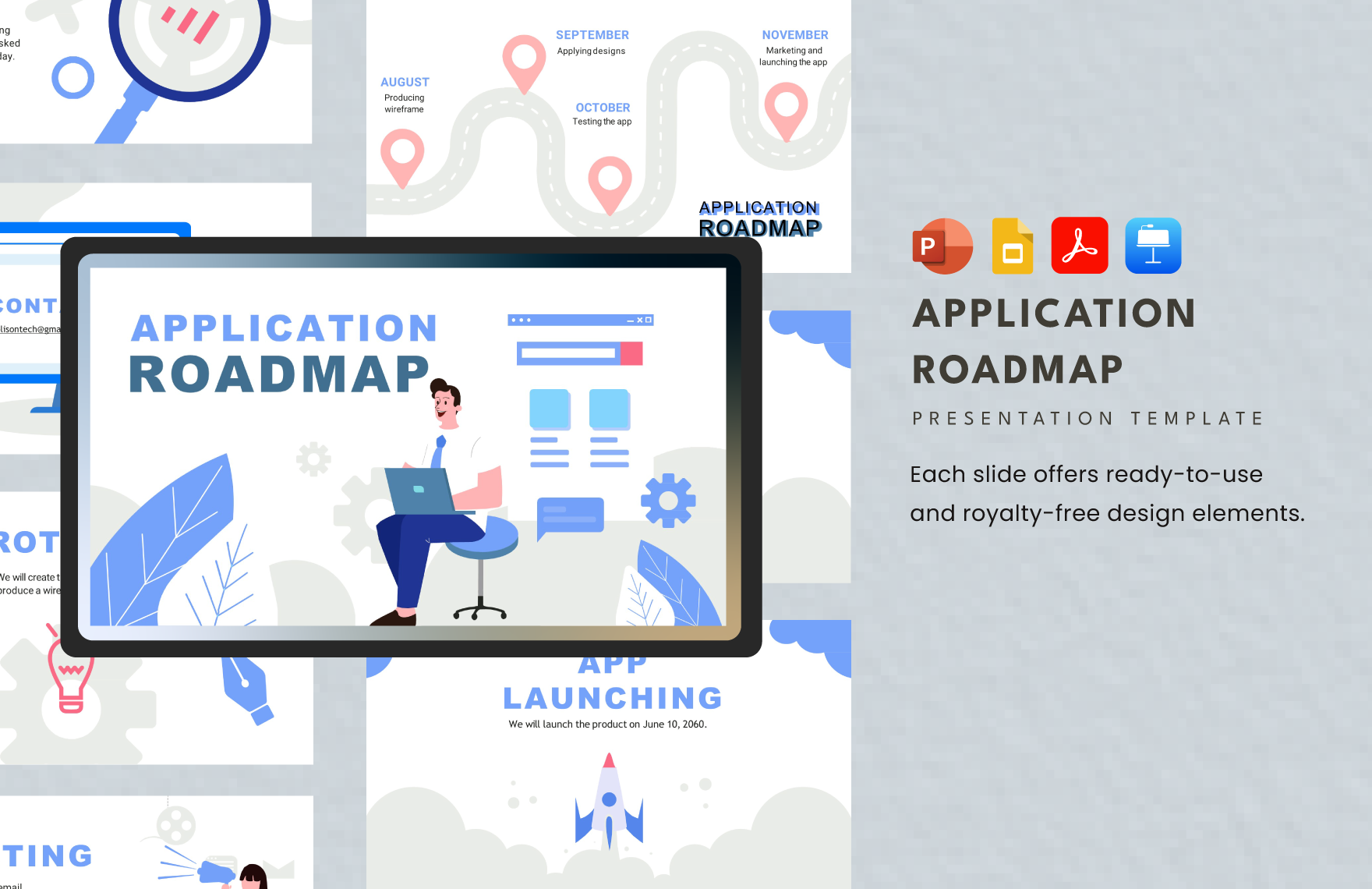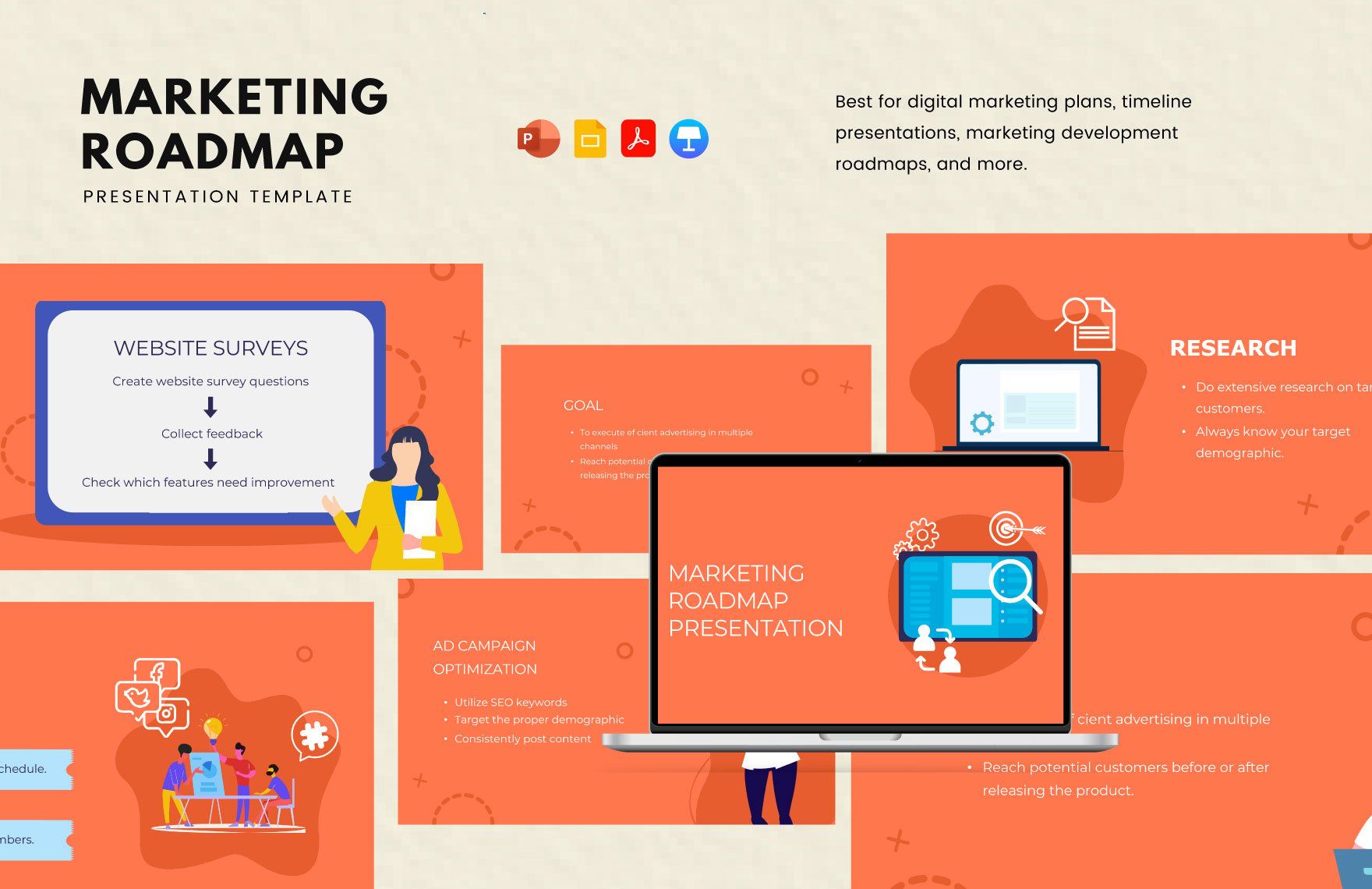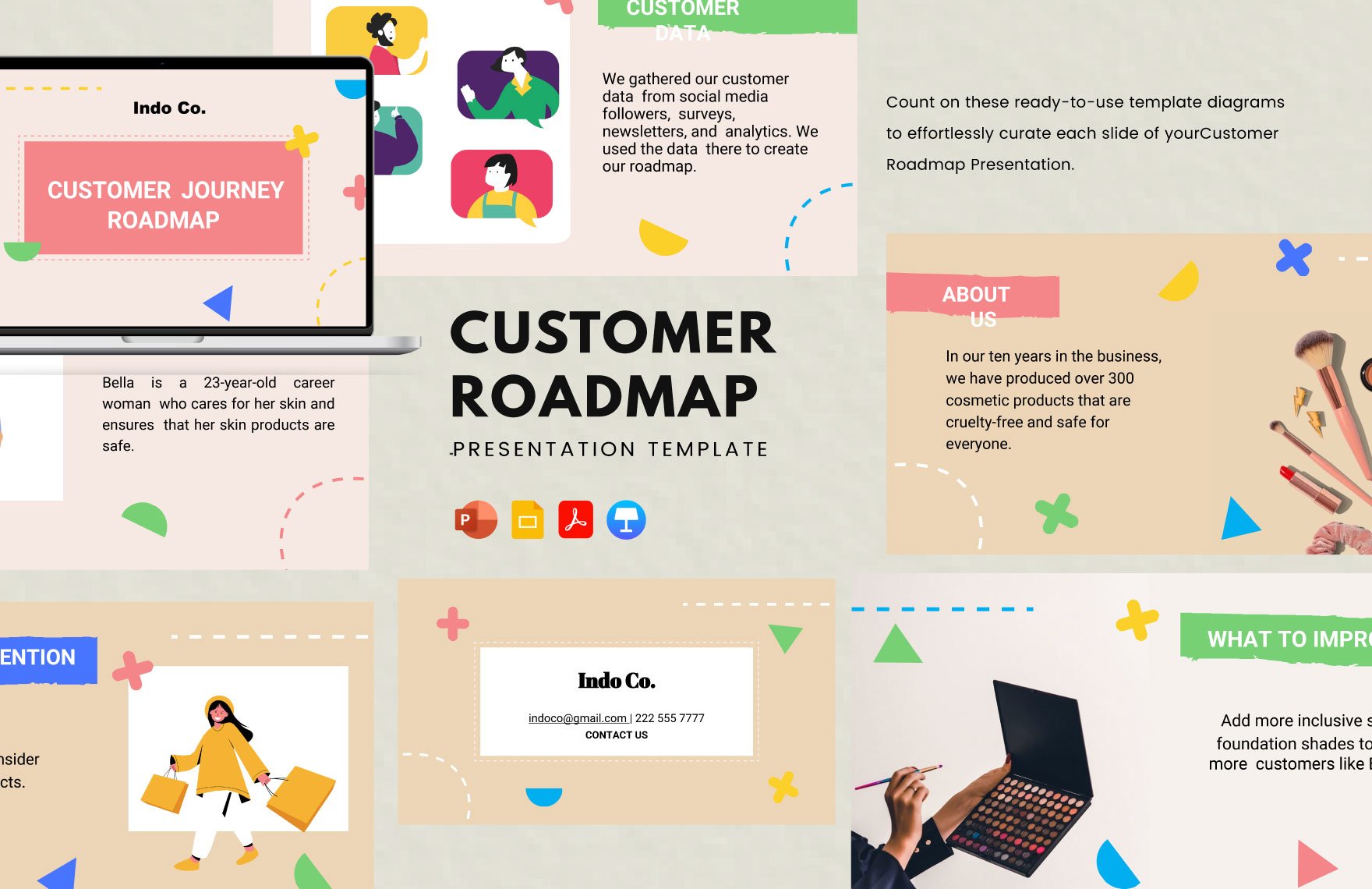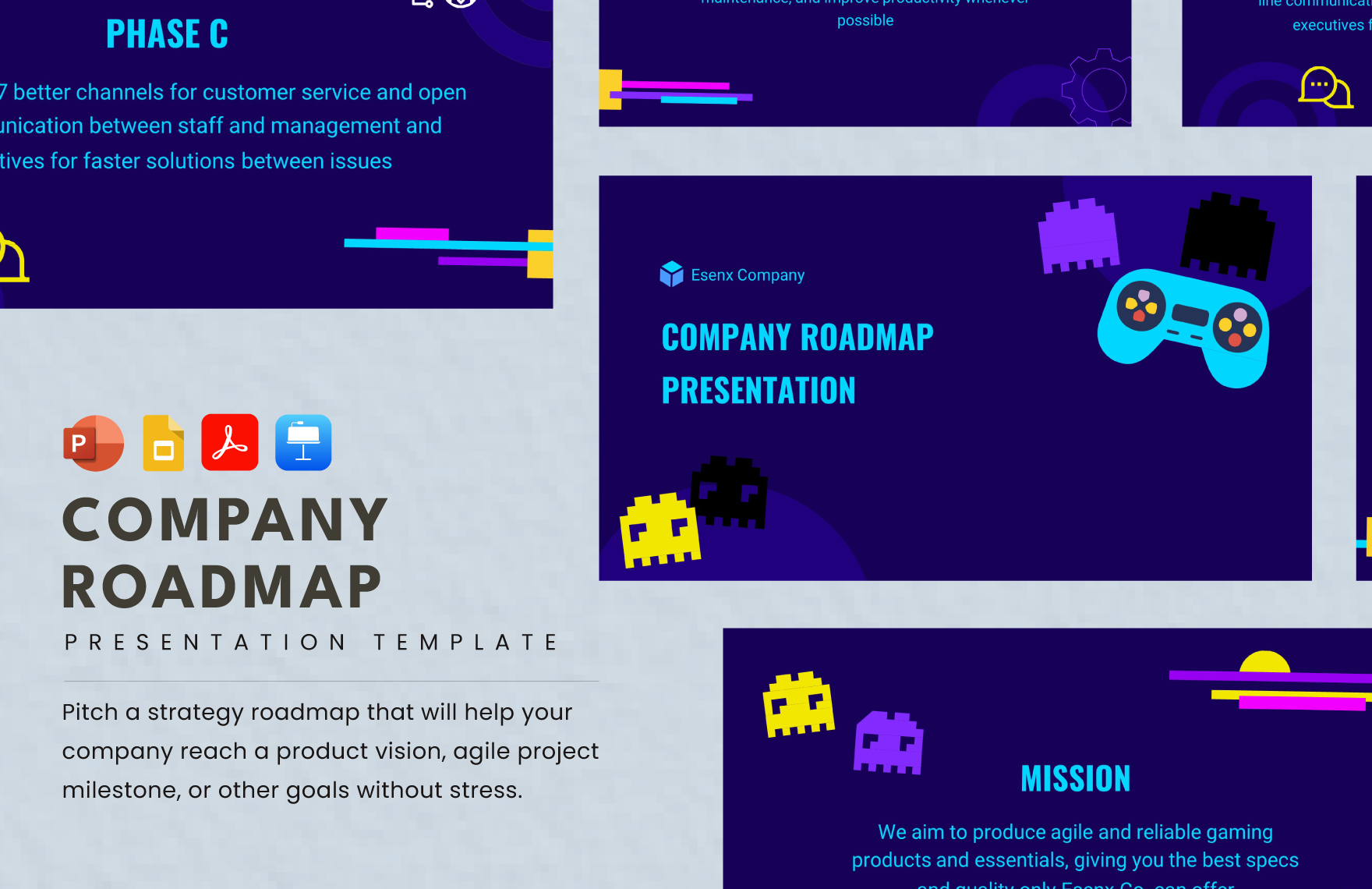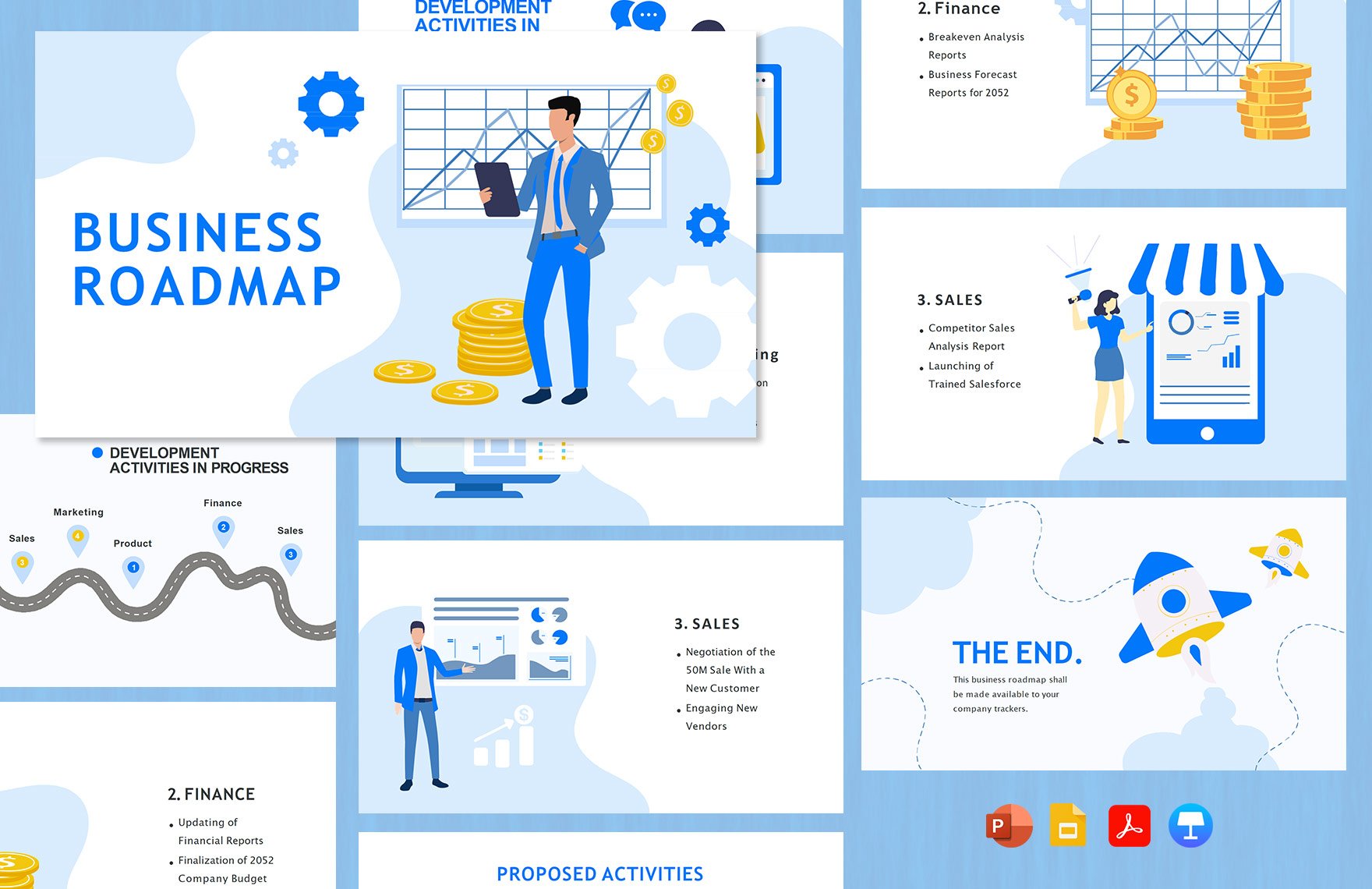Bring Your Strategic Planning to Life with Product Roadmap Templates from Template.net
Keep your team aligned, streamline project goals, and enhance your planning efficiency with Product Roadmap Templates by Template.net. These templates are perfect for project managers, team leads, and business strategists looking to clearly communicate future product developments. Use them to outline your product timeline, key milestones, or to visualize your project phases. Each template includes sections for time/date/details, ensuring your roadmap is thorough and easy to follow. Best of all, there is no to-level technical skill required. These professional-grade designs save you time, allowing you to focus on driving results, and with customizable layouts for both print and digital distribution, you can tailor them to fit your specific needs.
Discover the many roadmap templates we have on hand that cater to various industries and project types, from IT and software development to marketing campaigns and retail planning. Start by selecting a base template, then easily swap in your own timelines, graphics, or logos, and tweak colors and fonts to match your brand. For added flair, drag and drop icons or graphics, or incorporate animated effects to make your presentation stand out. With AI-powered text tools, the possibilities are endless, allowing you to create engaging content without technical know-how. Our library is regularly updated with fresh, new designs to keep your projects dynamic and fresh. Once your roadmap is ready, download it for print, share via a link, or export it to your favorite digital platforms. Collaborate seamlessly in real-time and ensure maximum impact across multiple channels.
